Vietnam Veterans Welcome Home - 2016

Vietnam Veterans Welcome Home - 2016
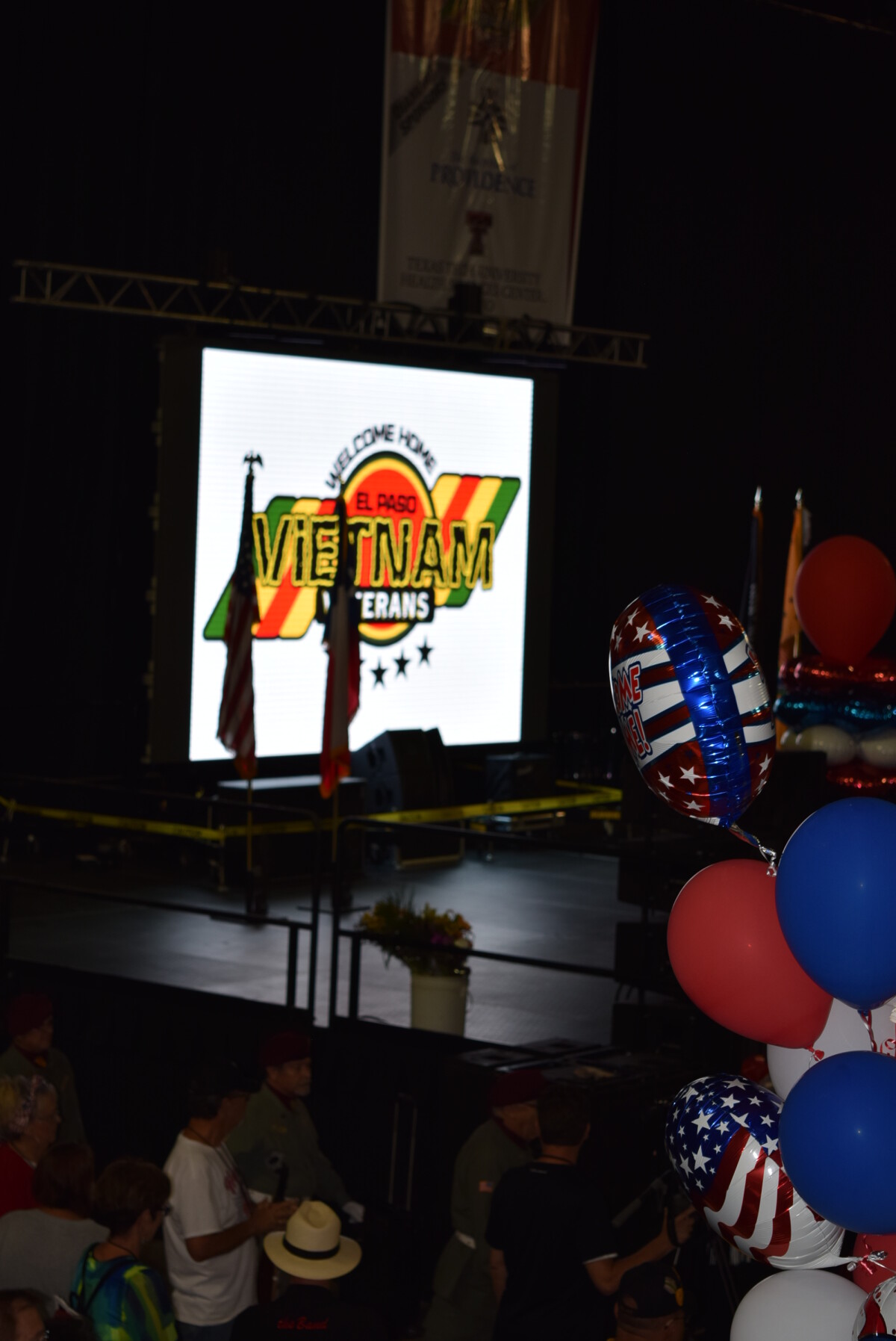
Vietnam Veterans Welcome Home - 2016
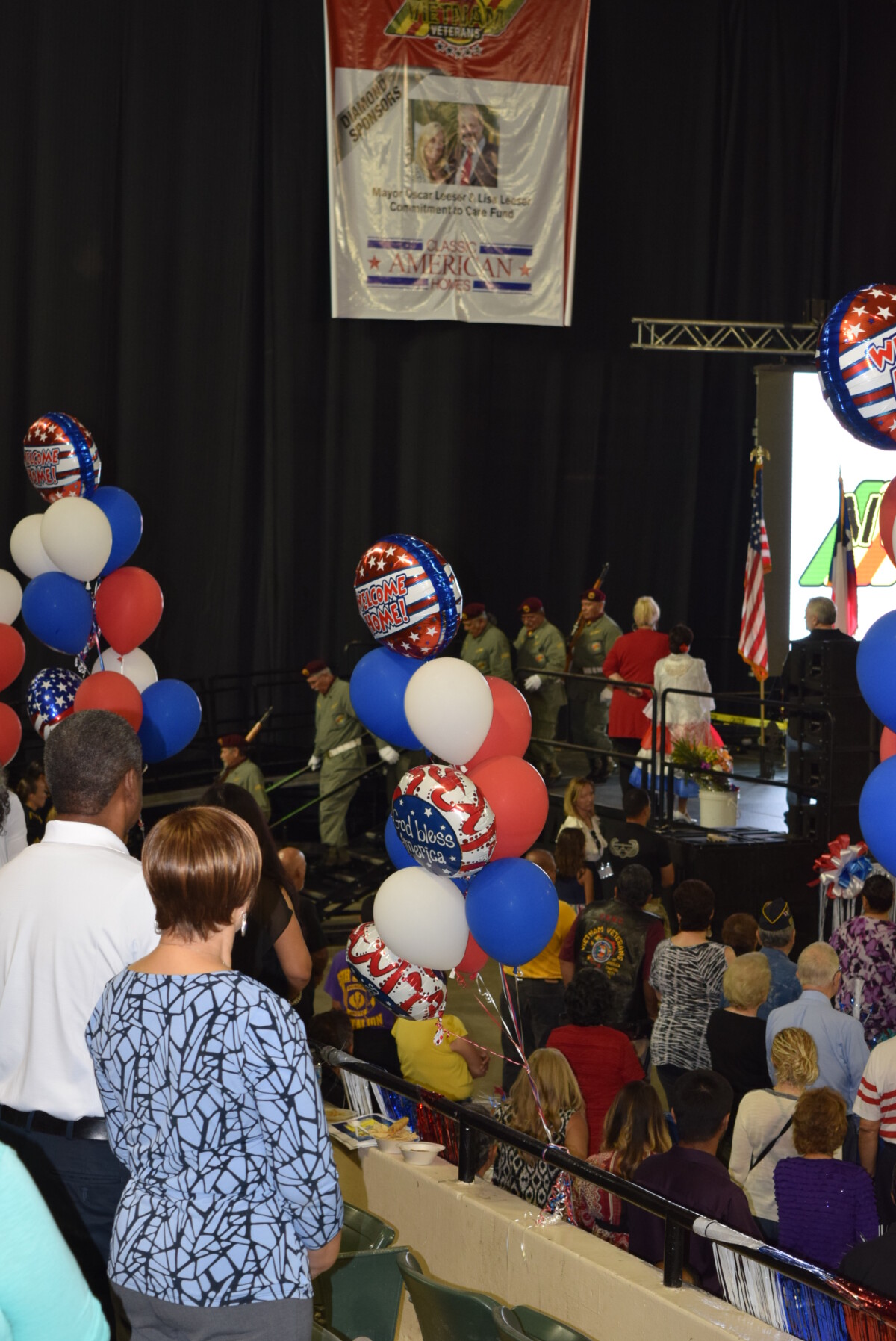
Vietnam Veterans Welcome Home - 2016
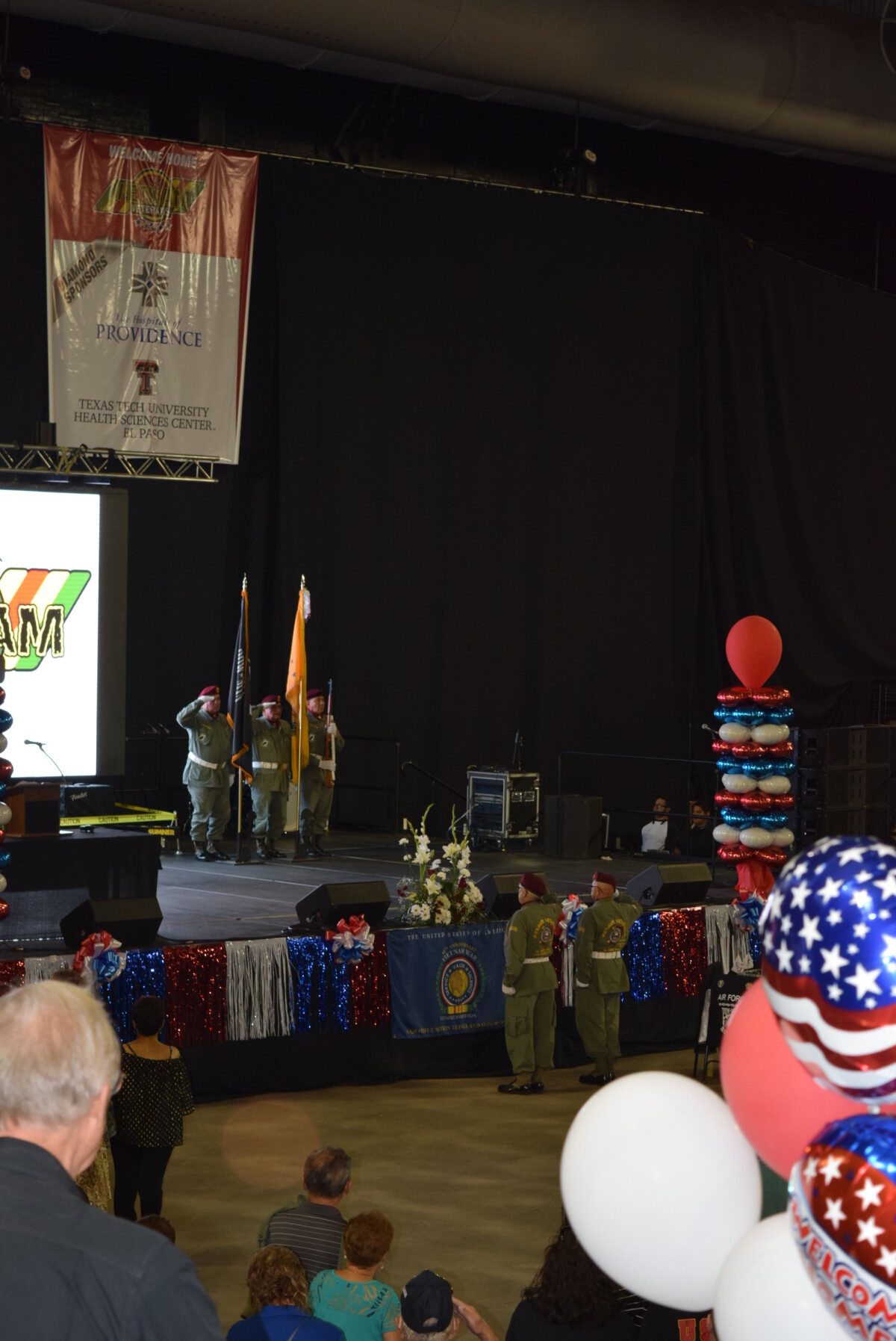
Vietnam Veterans Welcome Home - 2016
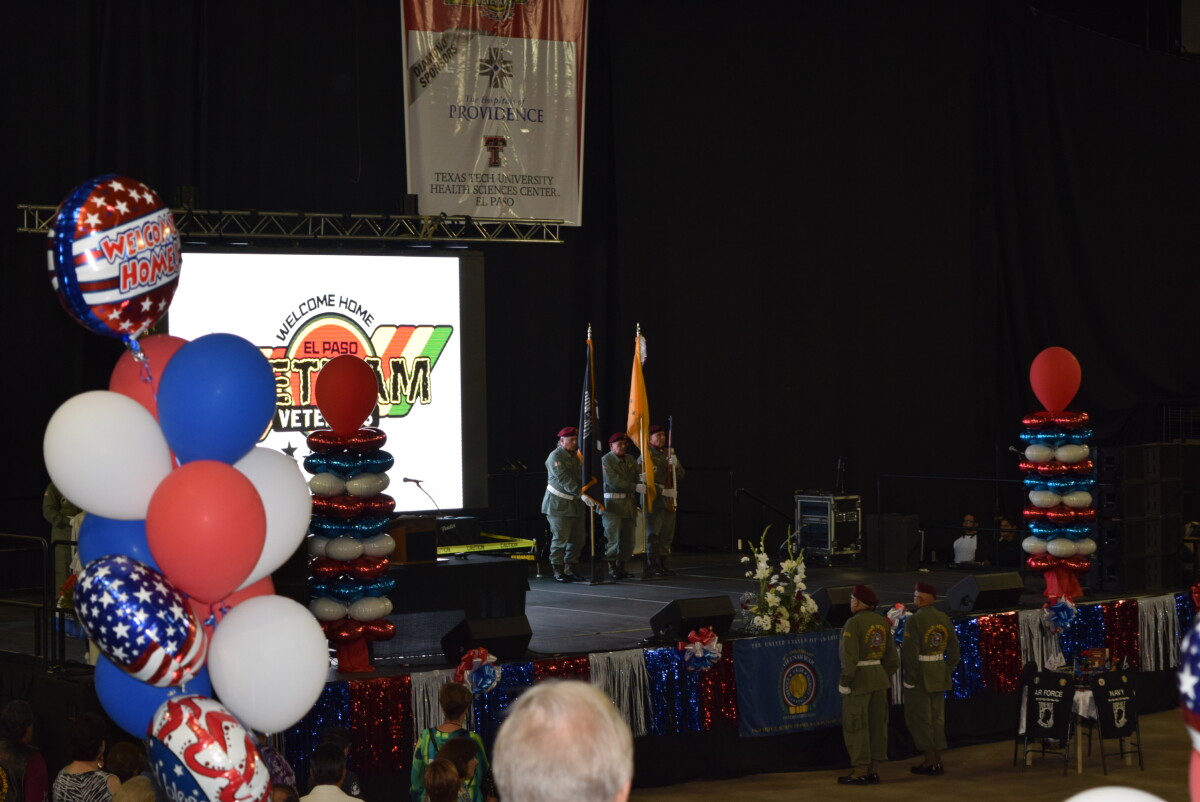
Vietnam Veterans Welcome Home - 2016

Vietnam Veterans Welcome Home - 2016

Vietnam Veterans Welcome Home - 2016
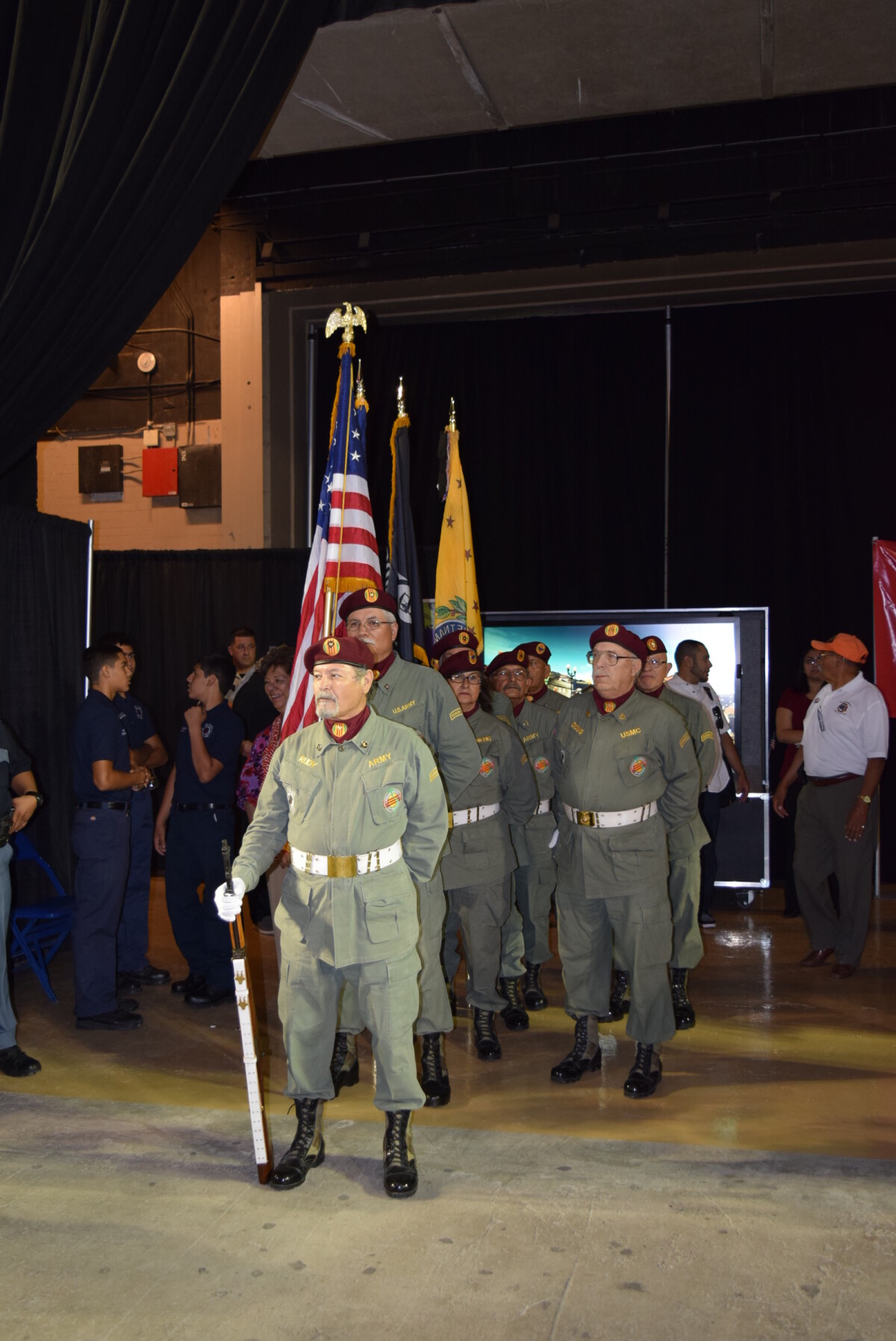
Vietnam Veterans Welcome Home - 2016
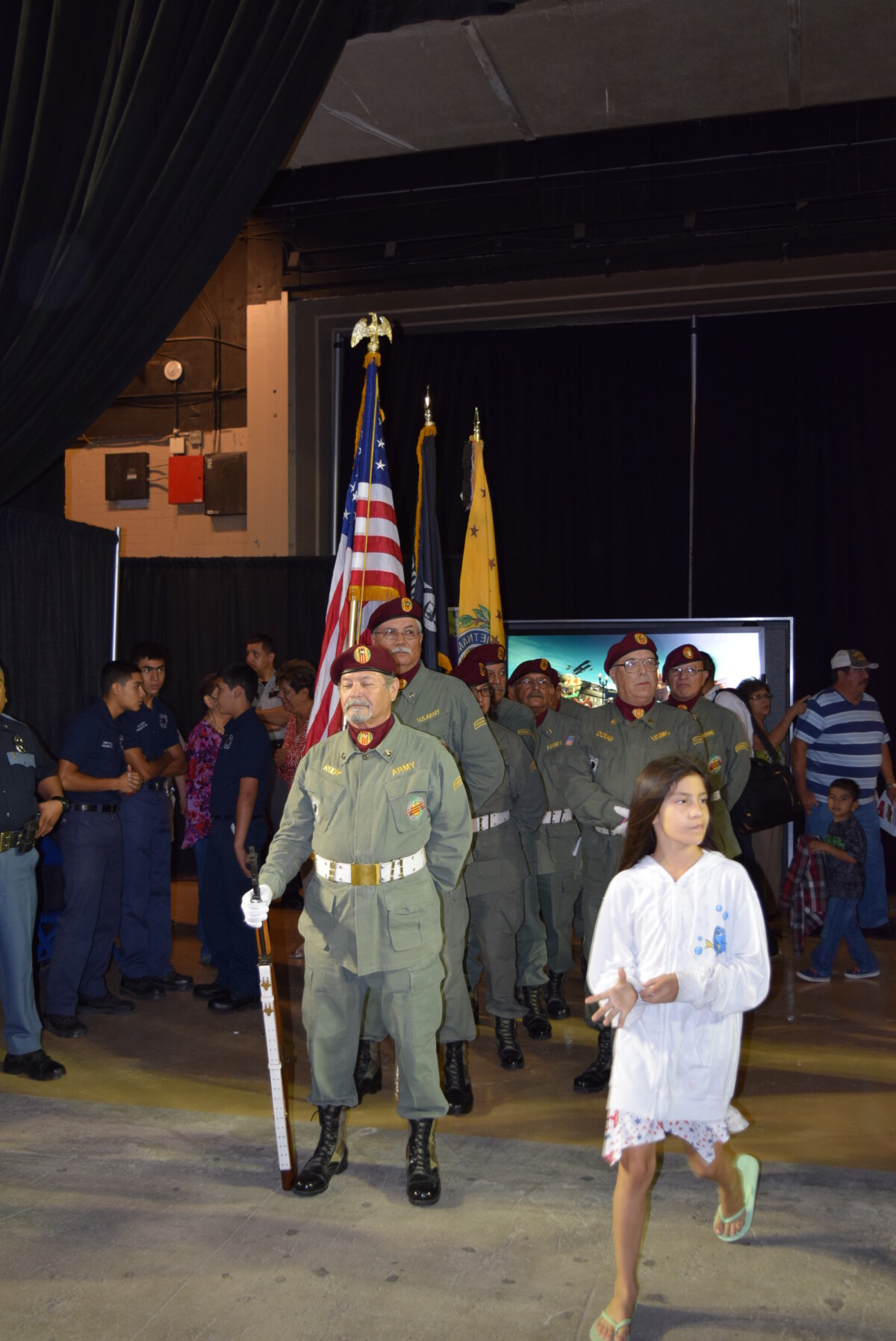
Vietnam Veterans Welcome Home - 2016
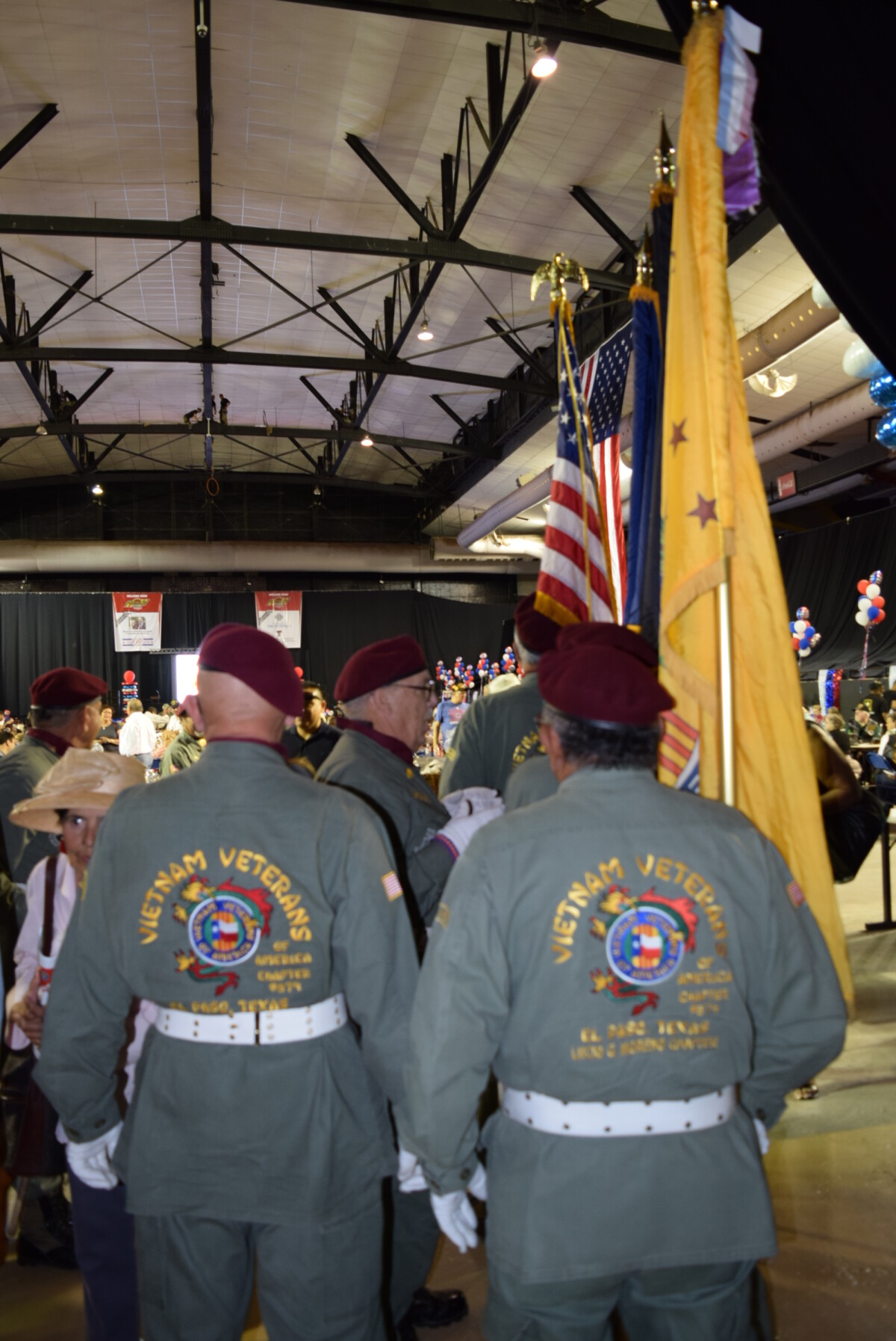
Vietnam Veterans Welcome Home - 2016
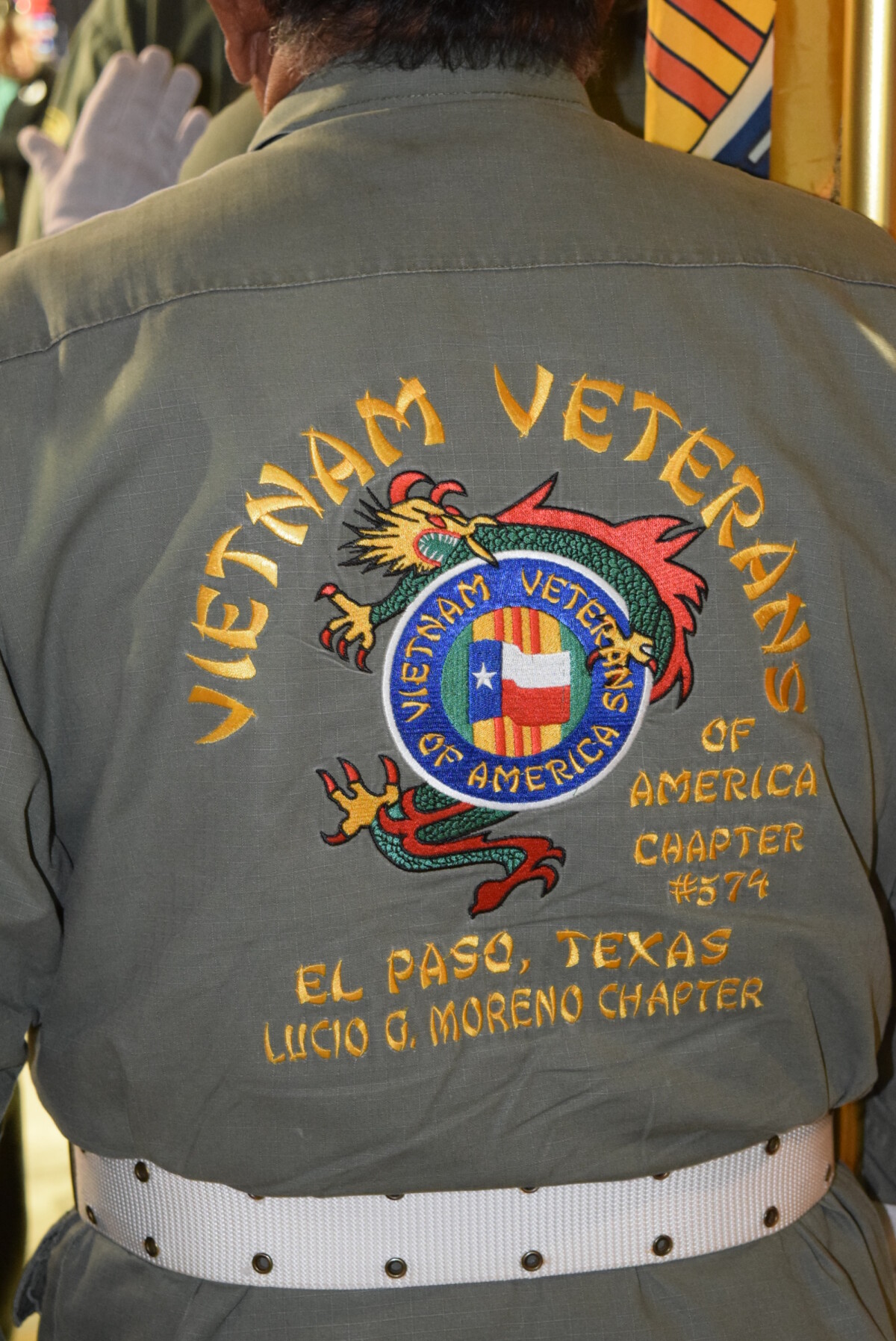
Vietnam Veterans Welcome Home - 2016
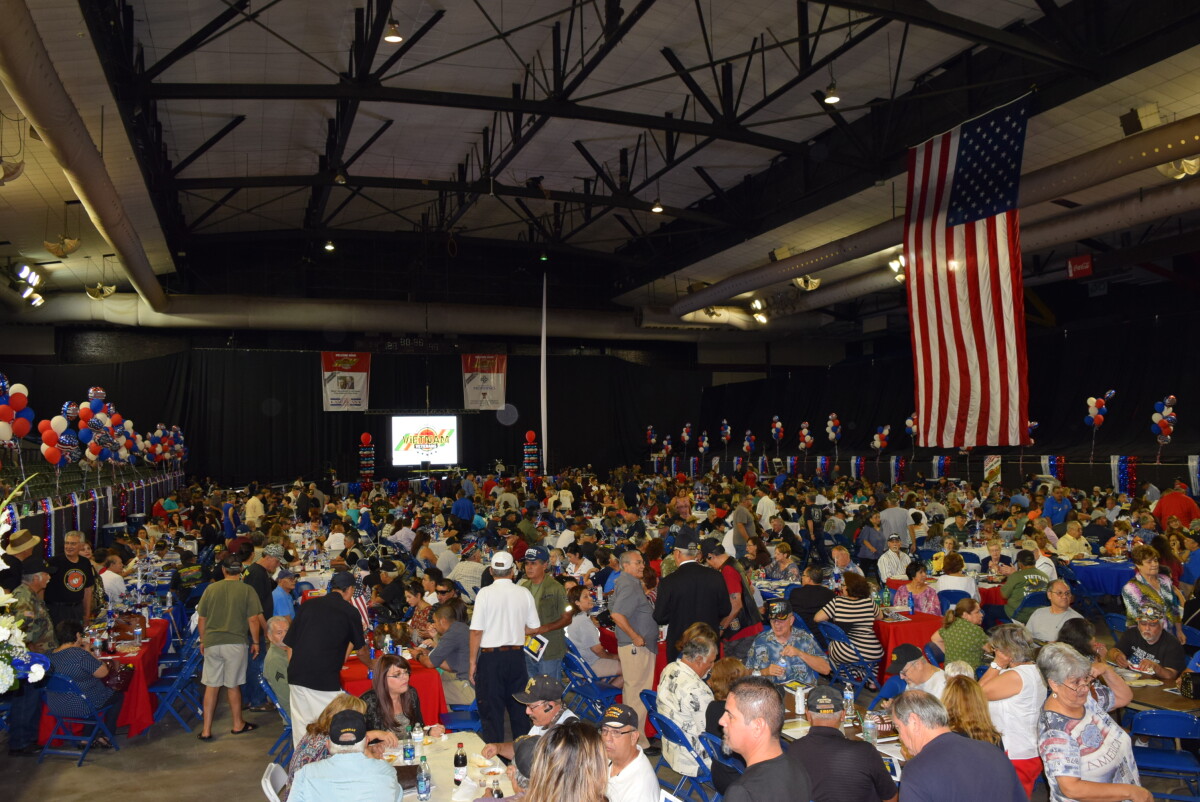
Vietnam Veterans Welcome Home - 2016
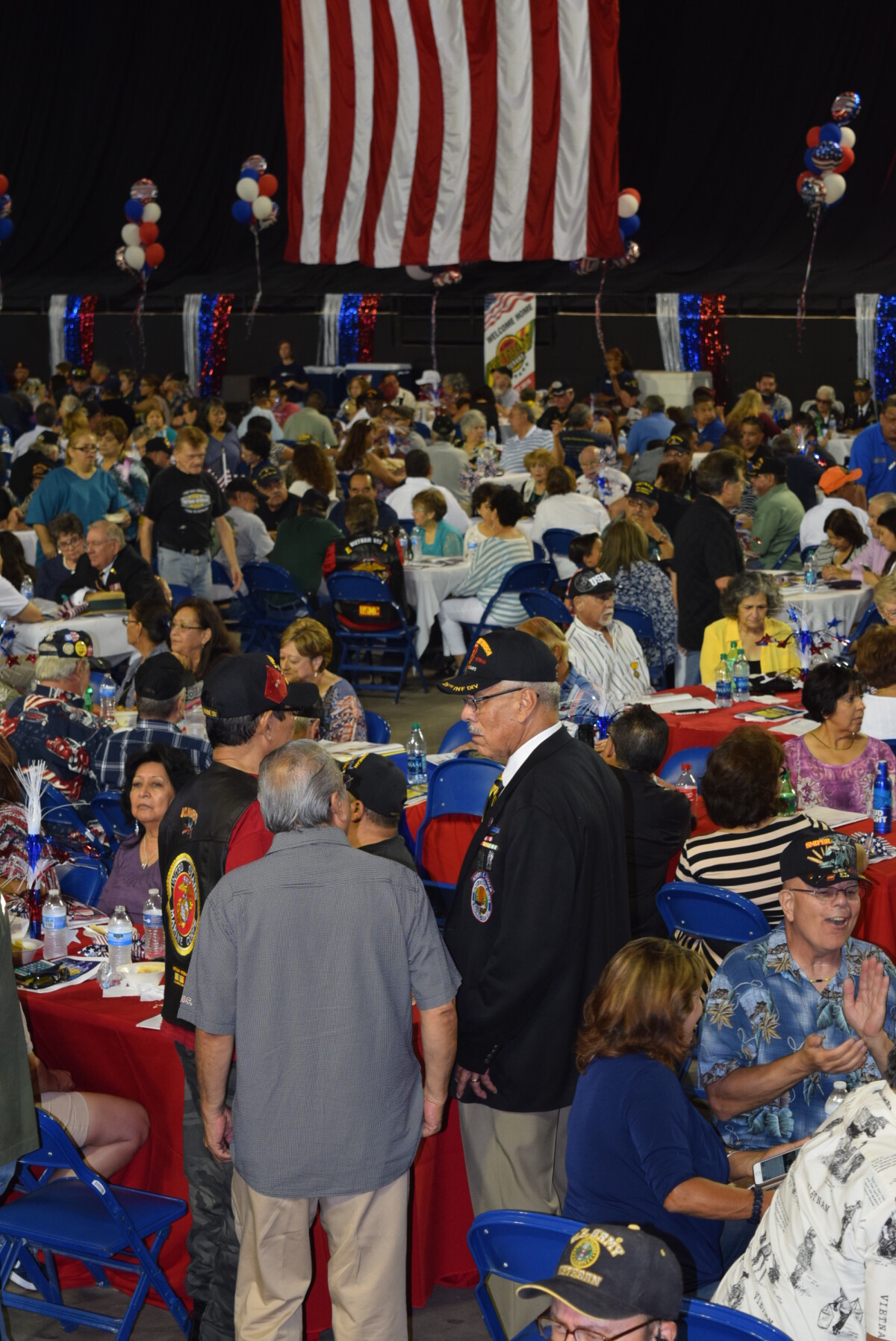
Vietnam Veterans Welcome Home - 2016
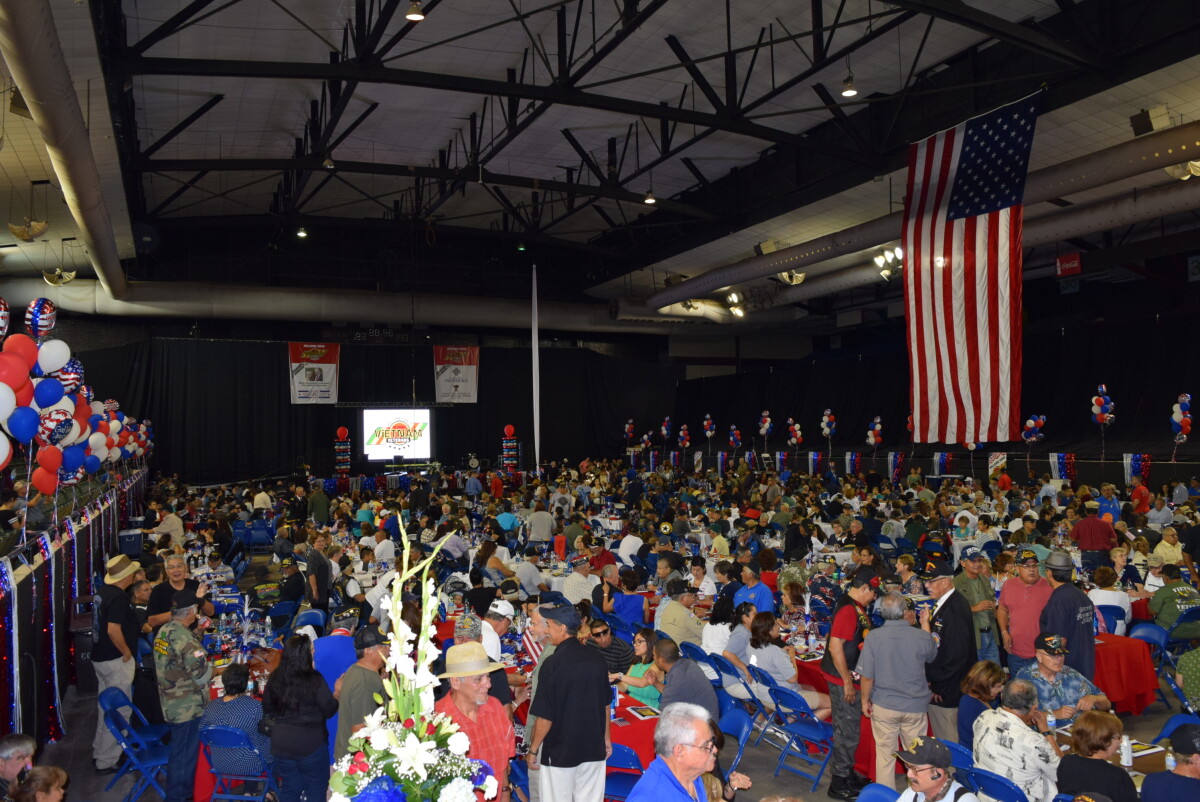
Vietnam Veterans Welcome Home - 2016
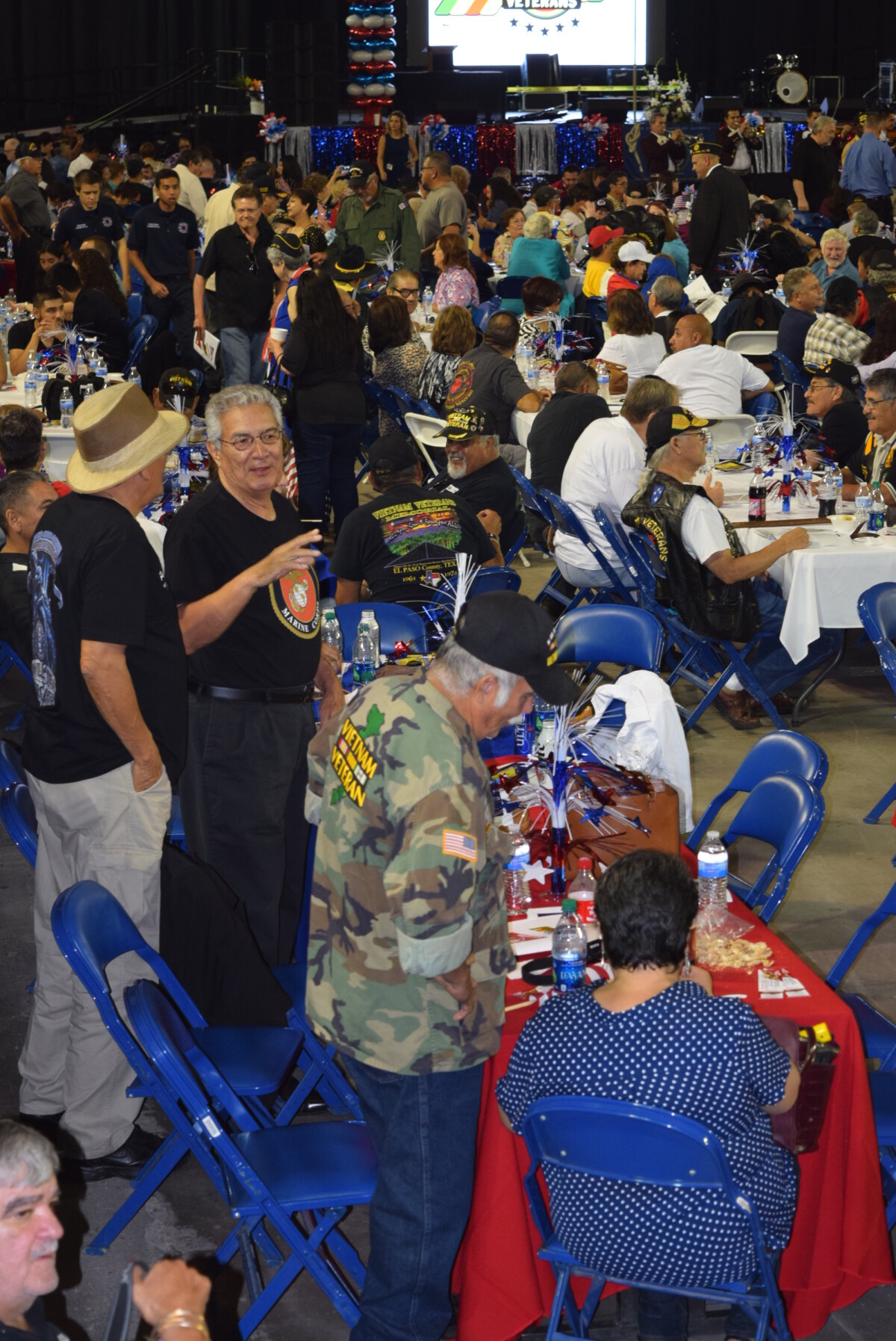
Vietnam Veterans Welcome Home - 2016
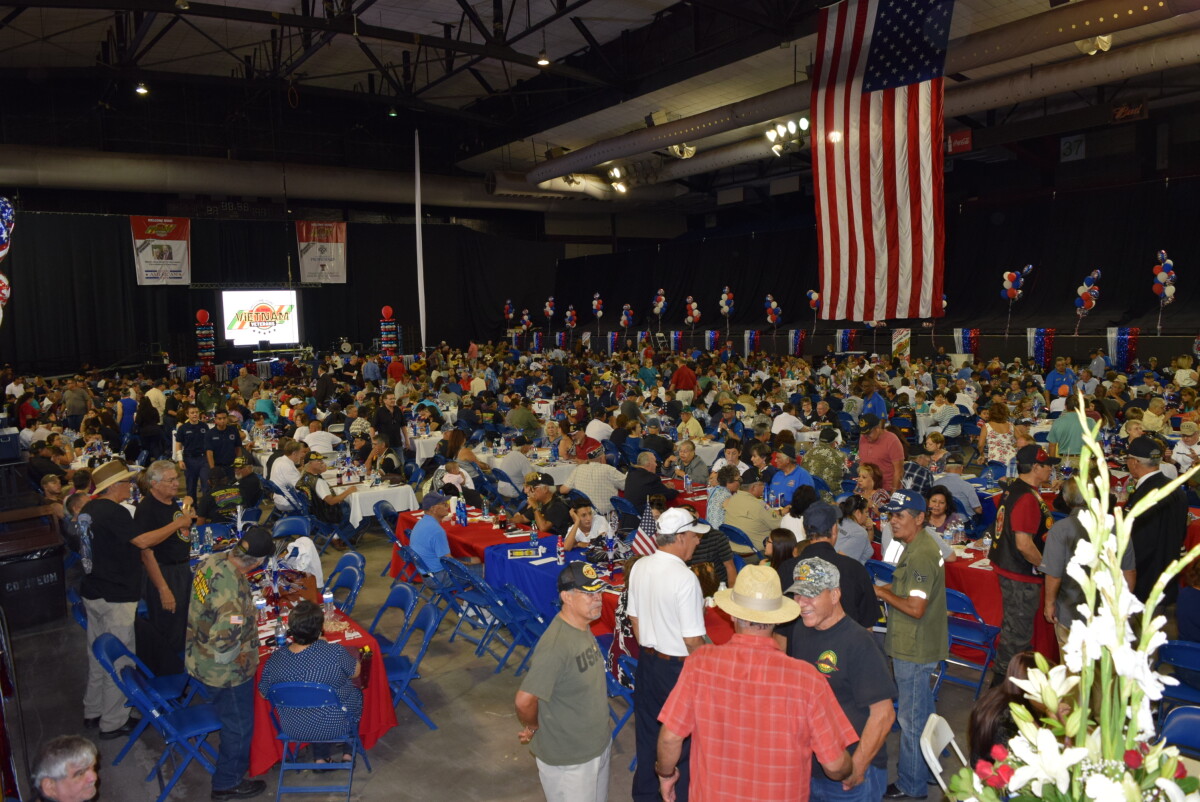
Vietnam Veterans Welcome Home - 2016

Vietnam Veterans Welcome Home - 2016
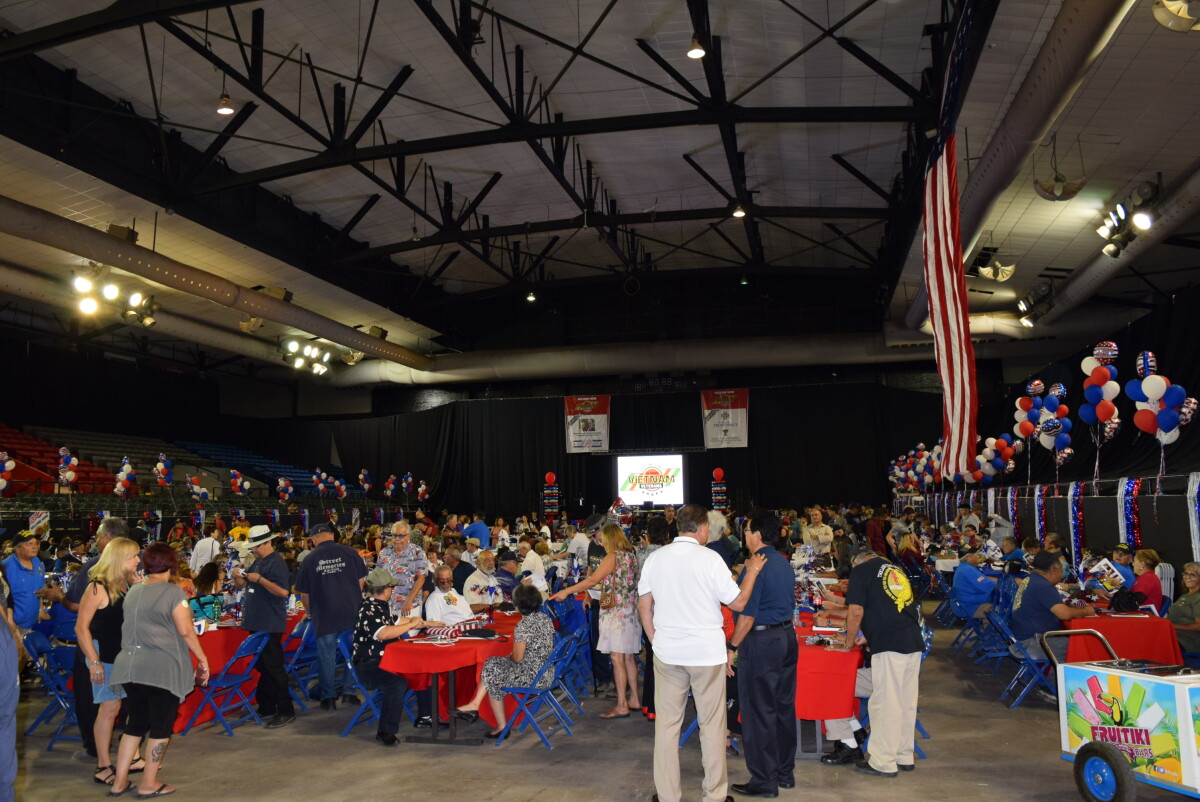
Vietnam Veterans Welcome Home - 2016

Vietnam Veterans Welcome Home - 2016

Welcome Home Vietnam Veterans - 2016
Commemoration for Vietnam Veterans --honoring their service. Because these veterans did not receive a proper welcome home. Events have taken place to give them a thank you from the community.
Area: Central / Clardy Fox
Source: EPMH
Uploaded by: El Paso Museum of History
Welcome Home Vietnam Veterans - 2016
Commemoration for the Vietnam Veterans who did not receive a proper welcome home after the war. The Vietnam War (Vietnamese: Chiến tranh Việt Nam), also known as the Second Indochina War, and known in Vietnam as Resistance War Against America (Vietnamese: Kháng chiến chống Mỹ) or simply the American War, was a war that occurred in Vietnam, Laos, and Cambodia from 1 November 1955 to the fall of Saigon on 30 April 1975. It was the second of the Indochina Wars and was officially fought between North Vietnam and the government of South Vietnam. The North Vietnamese army was supported by the Soviet Union, China and other communist allies and the South Vietnamese army was supported by the United States, Philippines and other anti-communist allies and the war is therefore considered a Cold War-era proxy war. The Viet Cong (also known as the National Liberation Front, or NLF), a South Vietnamese communist common front aided by the North, fought a guerrilla war against anti-communist forces in the region, while the People's Army of Vietnam, also known as the North Vietnamese Army (NVA), engaged in more conventional warfare, at times committing large units to battle. As the war continued, the military actions of the Viet Cong decreased as the role and engagement of the NVA grew. South Vietnamese and U.S forces relied on air superiority and overwhelming firepower to conduct search and destroy operations, involving ground forces, artillery, and airstrikes. In the course of the war, the U.S. conducted a large-scale strategic bombing campaign against North Vietnam. The North Vietnamese government and the Viet Cong were fighting to reunify Vietnam. They viewed the conflict as a colonial war and a continuation of the First Indochina War against forces from France and later on the U.S. The U.S. government viewed its involvement in the war as a way to prevent a Communist takeover of South Vietnam. This was part of a wider containment policy, with the stated aim of stopping the spread of communism. Beginning in 1950, American military advisors arrived in what was then French Indochina. U.S. involvement escalated in the early 1960s, with troop levels tripling in 1961 and again in 1962. U.S. involvement escalated further following the 1964 Gulf of Tonkin incident, in which a U.S. destroyer clashed with North Vietnamese fast attack craft, which was followed by the Gulf of Tonkin Resolution, which gave the U.S. president authorization to increase U.S. military presence. Regular U.S. combat units were deployed beginning in 1965. Operations crossed international borders: bordering areas of Laos and Cambodia were heavily bombed by U.S. forces as American involvement in the war peaked in 1968, the same year that the communist side launched the Tet Offensive. The Tet Offensive failed in its goal of overthrowing the South Vietnamese government, but became the turning point in the war, as it persuaded a large segment of the U.S. population that its government's claims of progress toward winning the war were illusory despite many years of massive U.S. military aid to South Vietnam. Gradual withdrawal of U.S. ground forces began as part of "Vietnamization", which aimed to end American involvement in the war while transferring the task of fighting the Communists to the South Vietnamese themselves. Despite the Paris Peace Accord, which was signed by all parties in January 1973, the fighting continued. In the U.S. and the Western world, a large anti-Vietnam War movement developed as part of a larger counterculture. The war changed the dynamics between the Eastern and Western Blocs, and altered North–South relations. Direct U.S. military involvement ended on 15 August 1973. The capture of Saigon by the North Vietnamese Army in April 1975 marked the end of the war, and North and South Vietnam were reunified the following year. The war exacted a huge human cost in terms of fatalities (see Vietnam War casualties). Estimates of the number of Vietnamese soldiers and civilians killed vary from 800,000 to 3.1 million. Some 200,000–300,000 Cambodians,[47][48][49] 20,000–200,000 Laotians, and 58,220 U.S. service members also died in the conflict, with a further 1,626 missing in action. https://en.wikipedia.org/wiki/Vietnam_War
Area: Central / Clardy Fox
Source: EPMH
Uploaded by: El Paso Museum of History
Welcome Home Vietnam Veterans - 2016
Commemoration for the Vietnam Veterans who did not receive a proper welcome home after the war. The Vietnam War (Vietnamese: Chiến tranh Việt Nam), also known as the Second Indochina War, and known in Vietnam as Resistance War Against America (Vietnamese: Kháng chiến chống Mỹ) or simply the American War, was a war that occurred in Vietnam, Laos, and Cambodia from 1 November 1955 to the fall of Saigon on 30 April 1975. It was the second of the Indochina Wars and was officially fought between North Vietnam and the government of South Vietnam. The North Vietnamese army was supported by the Soviet Union, China and other communist allies and the South Vietnamese army was supported by the United States, Philippines and other anti-communist allies and the war is therefore considered a Cold War-era proxy war. The Viet Cong (also known as the National Liberation Front, or NLF), a South Vietnamese communist common front aided by the North, fought a guerrilla war against anti-communist forces in the region, while the People's Army of Vietnam, also known as the North Vietnamese Army (NVA), engaged in more conventional warfare, at times committing large units to battle. As the war continued, the military actions of the Viet Cong decreased as the role and engagement of the NVA grew. South Vietnamese and U.S forces relied on air superiority and overwhelming firepower to conduct search and destroy operations, involving ground forces, artillery, and airstrikes. In the course of the war, the U.S. conducted a large-scale strategic bombing campaign against North Vietnam. The North Vietnamese government and the Viet Cong were fighting to reunify Vietnam. They viewed the conflict as a colonial war and a continuation of the First Indochina War against forces from France and later on the U.S. The U.S. government viewed its involvement in the war as a way to prevent a Communist takeover of South Vietnam. This was part of a wider containment policy, with the stated aim of stopping the spread of communism. Beginning in 1950, American military advisors arrived in what was then French Indochina. U.S. involvement escalated in the early 1960s, with troop levels tripling in 1961 and again in 1962. U.S. involvement escalated further following the 1964 Gulf of Tonkin incident, in which a U.S. destroyer clashed with North Vietnamese fast attack craft, which was followed by the Gulf of Tonkin Resolution, which gave the U.S. president authorization to increase U.S. military presence. Regular U.S. combat units were deployed beginning in 1965. Operations crossed international borders: bordering areas of Laos and Cambodia were heavily bombed by U.S. forces as American involvement in the war peaked in 1968, the same year that the communist side launched the Tet Offensive. The Tet Offensive failed in its goal of overthrowing the South Vietnamese government, but became the turning point in the war, as it persuaded a large segment of the U.S. population that its government's claims of progress toward winning the war were illusory despite many years of massive U.S. military aid to South Vietnam. Gradual withdrawal of U.S. ground forces began as part of "Vietnamization", which aimed to end American involvement in the war while transferring the task of fighting the Communists to the South Vietnamese themselves. Despite the Paris Peace Accord, which was signed by all parties in January 1973, the fighting continued. In the U.S. and the Western world, a large anti-Vietnam War movement developed as part of a larger counterculture. The war changed the dynamics between the Eastern and Western Blocs, and altered North–South relations. Direct U.S. military involvement ended on 15 August 1973. The capture of Saigon by the North Vietnamese Army in April 1975 marked the end of the war, and North and South Vietnam were reunified the following year. The war exacted a huge human cost in terms of fatalities (see Vietnam War casualties). Estimates of the number of Vietnamese soldiers and civilians killed vary from 800,000 to 3.1 million. Some 200,000–300,000 Cambodians,[47][48][49] 20,000–200,000 Laotians, and 58,220 U.S. service members also died in the conflict, with a further 1,626 missing in action. https://en.wikipedia.org/wiki/Vietnam_War
Area: Central / Clardy Fox
Source: EPMH
Uploaded by: El Paso Museum of History
Welcome Home Vietnam Veterans - 2016
Commemoration for the Vietnam Veterans who did not receive a proper welcome home after the war. The Vietnam War (Vietnamese: Chiến tranh Việt Nam), also known as the Second Indochina War, and known in Vietnam as Resistance War Against America (Vietnamese: Kháng chiến chống Mỹ) or simply the American War, was a war that occurred in Vietnam, Laos, and Cambodia from 1 November 1955 to the fall of Saigon on 30 April 1975. It was the second of the Indochina Wars and was officially fought between North Vietnam and the government of South Vietnam. The North Vietnamese army was supported by the Soviet Union, China and other communist allies and the South Vietnamese army was supported by the United States, Philippines and other anti-communist allies and the war is therefore considered a Cold War-era proxy war. The Viet Cong (also known as the National Liberation Front, or NLF), a South Vietnamese communist common front aided by the North, fought a guerrilla war against anti-communist forces in the region, while the People's Army of Vietnam, also known as the North Vietnamese Army (NVA), engaged in more conventional warfare, at times committing large units to battle. As the war continued, the military actions of the Viet Cong decreased as the role and engagement of the NVA grew. South Vietnamese and U.S forces relied on air superiority and overwhelming firepower to conduct search and destroy operations, involving ground forces, artillery, and airstrikes. In the course of the war, the U.S. conducted a large-scale strategic bombing campaign against North Vietnam. The North Vietnamese government and the Viet Cong were fighting to reunify Vietnam. They viewed the conflict as a colonial war and a continuation of the First Indochina War against forces from France and later on the U.S. The U.S. government viewed its involvement in the war as a way to prevent a Communist takeover of South Vietnam. This was part of a wider containment policy, with the stated aim of stopping the spread of communism. Beginning in 1950, American military advisors arrived in what was then French Indochina. U.S. involvement escalated in the early 1960s, with troop levels tripling in 1961 and again in 1962. U.S. involvement escalated further following the 1964 Gulf of Tonkin incident, in which a U.S. destroyer clashed with North Vietnamese fast attack craft, which was followed by the Gulf of Tonkin Resolution, which gave the U.S. president authorization to increase U.S. military presence. Regular U.S. combat units were deployed beginning in 1965. Operations crossed international borders: bordering areas of Laos and Cambodia were heavily bombed by U.S. forces as American involvement in the war peaked in 1968, the same year that the communist side launched the Tet Offensive. The Tet Offensive failed in its goal of overthrowing the South Vietnamese government, but became the turning point in the war, as it persuaded a large segment of the U.S. population that its government's claims of progress toward winning the war were illusory despite many years of massive U.S. military aid to South Vietnam. Gradual withdrawal of U.S. ground forces began as part of "Vietnamization", which aimed to end American involvement in the war while transferring the task of fighting the Communists to the South Vietnamese themselves. Despite the Paris Peace Accord, which was signed by all parties in January 1973, the fighting continued. In the U.S. and the Western world, a large anti-Vietnam War movement developed as part of a larger counterculture. The war changed the dynamics between the Eastern and Western Blocs, and altered North–South relations. Direct U.S. military involvement ended on 15 August 1973. The capture of Saigon by the North Vietnamese Army in April 1975 marked the end of the war, and North and South Vietnam were reunified the following year. The war exacted a huge human cost in terms of fatalities (see Vietnam War casualties). Estimates of the number of Vietnamese soldiers and civilians killed vary from 800,000 to 3.1 million. Some 200,000–300,000 Cambodians,[47][48][49] 20,000–200,000 Laotians, and 58,220 U.S. service members also died in the conflict, with a further 1,626 missing in action. https://en.wikipedia.org/wiki/Vietnam_War
Area: Central / Clardy Fox
Source: EPMH
Uploaded by: El Paso Museum of History
Welcome Home Vietnam Veterans - 2016
Commemoration for the Vietnam Veterans who did not receive a proper welcome home after the war. The Vietnam War (Vietnamese: Chiến tranh Việt Nam), also known as the Second Indochina War, and known in Vietnam as Resistance War Against America (Vietnamese: Kháng chiến chống Mỹ) or simply the American War, was a war that occurred in Vietnam, Laos, and Cambodia from 1 November 1955 to the fall of Saigon on 30 April 1975. It was the second of the Indochina Wars and was officially fought between North Vietnam and the government of South Vietnam. The North Vietnamese army was supported by the Soviet Union, China and other communist allies and the South Vietnamese army was supported by the United States, Philippines and other anti-communist allies and the war is therefore considered a Cold War-era proxy war. The Viet Cong (also known as the National Liberation Front, or NLF), a South Vietnamese communist common front aided by the North, fought a guerrilla war against anti-communist forces in the region, while the People's Army of Vietnam, also known as the North Vietnamese Army (NVA), engaged in more conventional warfare, at times committing large units to battle. As the war continued, the military actions of the Viet Cong decreased as the role and engagement of the NVA grew. South Vietnamese and U.S forces relied on air superiority and overwhelming firepower to conduct search and destroy operations, involving ground forces, artillery, and airstrikes. In the course of the war, the U.S. conducted a large-scale strategic bombing campaign against North Vietnam. The North Vietnamese government and the Viet Cong were fighting to reunify Vietnam. They viewed the conflict as a colonial war and a continuation of the First Indochina War against forces from France and later on the U.S. The U.S. government viewed its involvement in the war as a way to prevent a Communist takeover of South Vietnam. This was part of a wider containment policy, with the stated aim of stopping the spread of communism. Beginning in 1950, American military advisors arrived in what was then French Indochina. U.S. involvement escalated in the early 1960s, with troop levels tripling in 1961 and again in 1962. U.S. involvement escalated further following the 1964 Gulf of Tonkin incident, in which a U.S. destroyer clashed with North Vietnamese fast attack craft, which was followed by the Gulf of Tonkin Resolution, which gave the U.S. president authorization to increase U.S. military presence. Regular U.S. combat units were deployed beginning in 1965. Operations crossed international borders: bordering areas of Laos and Cambodia were heavily bombed by U.S. forces as American involvement in the war peaked in 1968, the same year that the communist side launched the Tet Offensive. The Tet Offensive failed in its goal of overthrowing the South Vietnamese government, but became the turning point in the war, as it persuaded a large segment of the U.S. population that its government's claims of progress toward winning the war were illusory despite many years of massive U.S. military aid to South Vietnam. Gradual withdrawal of U.S. ground forces began as part of "Vietnamization", which aimed to end American involvement in the war while transferring the task of fighting the Communists to the South Vietnamese themselves. Despite the Paris Peace Accord, which was signed by all parties in January 1973, the fighting continued. In the U.S. and the Western world, a large anti-Vietnam War movement developed as part of a larger counterculture. The war changed the dynamics between the Eastern and Western Blocs, and altered North–South relations. Direct U.S. military involvement ended on 15 August 1973. The capture of Saigon by the North Vietnamese Army in April 1975 marked the end of the war, and North and South Vietnam were reunified the following year. The war exacted a huge human cost in terms of fatalities (see Vietnam War casualties). Estimates of the number of Vietnamese soldiers and civilians killed vary from 800,000 to 3.1 million. Some 200,000–300,000 Cambodians,[47][48][49] 20,000–200,000 Laotians, and 58,220 U.S. service members also died in the conflict, with a further 1,626 missing in action. https://en.wikipedia.org/wiki/Vietnam_War
Area: Central / Clardy Fox
Source: EPMH
Uploaded by: El Paso Museum of History
Welcome Home Vietnam Veterans - 2016
Commemoration for the Vietnam Veterans who did not receive a proper welcome home after the war. The Vietnam War (Vietnamese: Chiến tranh Việt Nam), also known as the Second Indochina War, and known in Vietnam as Resistance War Against America (Vietnamese: Kháng chiến chống Mỹ) or simply the American War, was a war that occurred in Vietnam, Laos, and Cambodia from 1 November 1955 to the fall of Saigon on 30 April 1975. It was the second of the Indochina Wars and was officially fought between North Vietnam and the government of South Vietnam. The North Vietnamese army was supported by the Soviet Union, China and other communist allies and the South Vietnamese army was supported by the United States, Philippines and other anti-communist allies and the war is therefore considered a Cold War-era proxy war. The Viet Cong (also known as the National Liberation Front, or NLF), a South Vietnamese communist common front aided by the North, fought a guerrilla war against anti-communist forces in the region, while the People's Army of Vietnam, also known as the North Vietnamese Army (NVA), engaged in more conventional warfare, at times committing large units to battle. As the war continued, the military actions of the Viet Cong decreased as the role and engagement of the NVA grew. South Vietnamese and U.S forces relied on air superiority and overwhelming firepower to conduct search and destroy operations, involving ground forces, artillery, and airstrikes. In the course of the war, the U.S. conducted a large-scale strategic bombing campaign against North Vietnam. The North Vietnamese government and the Viet Cong were fighting to reunify Vietnam. They viewed the conflict as a colonial war and a continuation of the First Indochina War against forces from France and later on the U.S. The U.S. government viewed its involvement in the war as a way to prevent a Communist takeover of South Vietnam. This was part of a wider containment policy, with the stated aim of stopping the spread of communism. Beginning in 1950, American military advisors arrived in what was then French Indochina. U.S. involvement escalated in the early 1960s, with troop levels tripling in 1961 and again in 1962. U.S. involvement escalated further following the 1964 Gulf of Tonkin incident, in which a U.S. destroyer clashed with North Vietnamese fast attack craft, which was followed by the Gulf of Tonkin Resolution, which gave the U.S. president authorization to increase U.S. military presence. Regular U.S. combat units were deployed beginning in 1965. Operations crossed international borders: bordering areas of Laos and Cambodia were heavily bombed by U.S. forces as American involvement in the war peaked in 1968, the same year that the communist side launched the Tet Offensive. The Tet Offensive failed in its goal of overthrowing the South Vietnamese government, but became the turning point in the war, as it persuaded a large segment of the U.S. population that its government's claims of progress toward winning the war were illusory despite many years of massive U.S. military aid to South Vietnam. Gradual withdrawal of U.S. ground forces began as part of "Vietnamization", which aimed to end American involvement in the war while transferring the task of fighting the Communists to the South Vietnamese themselves. Despite the Paris Peace Accord, which was signed by all parties in January 1973, the fighting continued. In the U.S. and the Western world, a large anti-Vietnam War movement developed as part of a larger counterculture. The war changed the dynamics between the Eastern and Western Blocs, and altered North–South relations. Direct U.S. military involvement ended on 15 August 1973. The capture of Saigon by the North Vietnamese Army in April 1975 marked the end of the war, and North and South Vietnam were reunified the following year. The war exacted a huge human cost in terms of fatalities (see Vietnam War casualties). Estimates of the number of Vietnamese soldiers and civilians killed vary from 800,000 to 3.1 million. Some 200,000–300,000 Cambodians,[47][48][49] 20,000–200,000 Laotians, and 58,220 U.S. service members also died in the conflict, with a further 1,626 missing in action. https://en.wikipedia.org/wiki/Vietnam_War
Area: Central / Clardy Fox
Source: EPMH
Uploaded by: El Paso Museum of History
Welcome Home Vietnam Veterans - 2016
Commemoration for the Vietnam Veterans who did not receive a proper welcome home after the war. The Vietnam War (Vietnamese: Chiến tranh Việt Nam), also known as the Second Indochina War, and known in Vietnam as Resistance War Against America (Vietnamese: Kháng chiến chống Mỹ) or simply the American War, was a war that occurred in Vietnam, Laos, and Cambodia from 1 November 1955 to the fall of Saigon on 30 April 1975. It was the second of the Indochina Wars and was officially fought between North Vietnam and the government of South Vietnam. The North Vietnamese army was supported by the Soviet Union, China and other communist allies and the South Vietnamese army was supported by the United States, Philippines and other anti-communist allies and the war is therefore considered a Cold War-era proxy war. The Viet Cong (also known as the National Liberation Front, or NLF), a South Vietnamese communist common front aided by the North, fought a guerrilla war against anti-communist forces in the region, while the People's Army of Vietnam, also known as the North Vietnamese Army (NVA), engaged in more conventional warfare, at times committing large units to battle. As the war continued, the military actions of the Viet Cong decreased as the role and engagement of the NVA grew. South Vietnamese and U.S forces relied on air superiority and overwhelming firepower to conduct search and destroy operations, involving ground forces, artillery, and airstrikes. In the course of the war, the U.S. conducted a large-scale strategic bombing campaign against North Vietnam. The North Vietnamese government and the Viet Cong were fighting to reunify Vietnam. They viewed the conflict as a colonial war and a continuation of the First Indochina War against forces from France and later on the U.S. The U.S. government viewed its involvement in the war as a way to prevent a Communist takeover of South Vietnam. This was part of a wider containment policy, with the stated aim of stopping the spread of communism. Beginning in 1950, American military advisors arrived in what was then French Indochina. U.S. involvement escalated in the early 1960s, with troop levels tripling in 1961 and again in 1962. U.S. involvement escalated further following the 1964 Gulf of Tonkin incident, in which a U.S. destroyer clashed with North Vietnamese fast attack craft, which was followed by the Gulf of Tonkin Resolution, which gave the U.S. president authorization to increase U.S. military presence. Regular U.S. combat units were deployed beginning in 1965. Operations crossed international borders: bordering areas of Laos and Cambodia were heavily bombed by U.S. forces as American involvement in the war peaked in 1968, the same year that the communist side launched the Tet Offensive. The Tet Offensive failed in its goal of overthrowing the South Vietnamese government, but became the turning point in the war, as it persuaded a large segment of the U.S. population that its government's claims of progress toward winning the war were illusory despite many years of massive U.S. military aid to South Vietnam. Gradual withdrawal of U.S. ground forces began as part of "Vietnamization", which aimed to end American involvement in the war while transferring the task of fighting the Communists to the South Vietnamese themselves. Despite the Paris Peace Accord, which was signed by all parties in January 1973, the fighting continued. In the U.S. and the Western world, a large anti-Vietnam War movement developed as part of a larger counterculture. The war changed the dynamics between the Eastern and Western Blocs, and altered North–South relations. Direct U.S. military involvement ended on 15 August 1973. The capture of Saigon by the North Vietnamese Army in April 1975 marked the end of the war, and North and South Vietnam were reunified the following year. The war exacted a huge human cost in terms of fatalities (see Vietnam War casualties). Estimates of the number of Vietnamese soldiers and civilians killed vary from 800,000 to 3.1 million. Some 200,000–300,000 Cambodians,[47][48][49] 20,000–200,000 Laotians, and 58,220 U.S. service members also died in the conflict, with a further 1,626 missing in action. https://en.wikipedia.org/wiki/Vietnam_War
Area: Central / Clardy Fox
Source: EPMH
Uploaded by: El Paso Museum of History
Welcome Home Vietnam Veterans - 2016
Commemoration for the Vietnam Veterans who did not receive a proper welcome home after the war. The Vietnam War (Vietnamese: Chiến tranh Việt Nam), also known as the Second Indochina War, and known in Vietnam as Resistance War Against America (Vietnamese: Kháng chiến chống Mỹ) or simply the American War, was a war that occurred in Vietnam, Laos, and Cambodia from 1 November 1955 to the fall of Saigon on 30 April 1975. It was the second of the Indochina Wars and was officially fought between North Vietnam and the government of South Vietnam. The North Vietnamese army was supported by the Soviet Union, China and other communist allies and the South Vietnamese army was supported by the United States, Philippines and other anti-communist allies and the war is therefore considered a Cold War-era proxy war. The Viet Cong (also known as the National Liberation Front, or NLF), a South Vietnamese communist common front aided by the North, fought a guerrilla war against anti-communist forces in the region, while the People's Army of Vietnam, also known as the North Vietnamese Army (NVA), engaged in more conventional warfare, at times committing large units to battle. As the war continued, the military actions of the Viet Cong decreased as the role and engagement of the NVA grew. South Vietnamese and U.S forces relied on air superiority and overwhelming firepower to conduct search and destroy operations, involving ground forces, artillery, and airstrikes. In the course of the war, the U.S. conducted a large-scale strategic bombing campaign against North Vietnam. The North Vietnamese government and the Viet Cong were fighting to reunify Vietnam. They viewed the conflict as a colonial war and a continuation of the First Indochina War against forces from France and later on the U.S. The U.S. government viewed its involvement in the war as a way to prevent a Communist takeover of South Vietnam. This was part of a wider containment policy, with the stated aim of stopping the spread of communism. Beginning in 1950, American military advisors arrived in what was then French Indochina. U.S. involvement escalated in the early 1960s, with troop levels tripling in 1961 and again in 1962. U.S. involvement escalated further following the 1964 Gulf of Tonkin incident, in which a U.S. destroyer clashed with North Vietnamese fast attack craft, which was followed by the Gulf of Tonkin Resolution, which gave the U.S. president authorization to increase U.S. military presence. Regular U.S. combat units were deployed beginning in 1965. Operations crossed international borders: bordering areas of Laos and Cambodia were heavily bombed by U.S. forces as American involvement in the war peaked in 1968, the same year that the communist side launched the Tet Offensive. The Tet Offensive failed in its goal of overthrowing the South Vietnamese government, but became the turning point in the war, as it persuaded a large segment of the U.S. population that its government's claims of progress toward winning the war were illusory despite many years of massive U.S. military aid to South Vietnam. Gradual withdrawal of U.S. ground forces began as part of "Vietnamization", which aimed to end American involvement in the war while transferring the task of fighting the Communists to the South Vietnamese themselves. Despite the Paris Peace Accord, which was signed by all parties in January 1973, the fighting continued. In the U.S. and the Western world, a large anti-Vietnam War movement developed as part of a larger counterculture. The war changed the dynamics between the Eastern and Western Blocs, and altered North–South relations. Direct U.S. military involvement ended on 15 August 1973. The capture of Saigon by the North Vietnamese Army in April 1975 marked the end of the war, and North and South Vietnam were reunified the following year. The war exacted a huge human cost in terms of fatalities (see Vietnam War casualties). Estimates of the number of Vietnamese soldiers and civilians killed vary from 800,000 to 3.1 million. Some 200,000–300,000 Cambodians,[47][48][49] 20,000–200,000 Laotians, and 58,220 U.S. service members also died in the conflict, with a further 1,626 missing in action. https://en.wikipedia.org/wiki/Vietnam_War
Area: Central / Clardy Fox
Source: EPMH
Uploaded by: El Paso Museum of History
Welcome Home Vietnam Veterans - 2016
Commemoration for the Vietnam Veterans who did not receive a proper welcome home after the war. The Vietnam War (Vietnamese: Chiến tranh Việt Nam), also known as the Second Indochina War, and known in Vietnam as Resistance War Against America (Vietnamese: Kháng chiến chống Mỹ) or simply the American War, was a war that occurred in Vietnam, Laos, and Cambodia from 1 November 1955 to the fall of Saigon on 30 April 1975. It was the second of the Indochina Wars and was officially fought between North Vietnam and the government of South Vietnam. The North Vietnamese army was supported by the Soviet Union, China and other communist allies and the South Vietnamese army was supported by the United States, Philippines and other anti-communist allies and the war is therefore considered a Cold War-era proxy war. The Viet Cong (also known as the National Liberation Front, or NLF), a South Vietnamese communist common front aided by the North, fought a guerrilla war against anti-communist forces in the region, while the People's Army of Vietnam, also known as the North Vietnamese Army (NVA), engaged in more conventional warfare, at times committing large units to battle. As the war continued, the military actions of the Viet Cong decreased as the role and engagement of the NVA grew. South Vietnamese and U.S forces relied on air superiority and overwhelming firepower to conduct search and destroy operations, involving ground forces, artillery, and airstrikes. In the course of the war, the U.S. conducted a large-scale strategic bombing campaign against North Vietnam. The North Vietnamese government and the Viet Cong were fighting to reunify Vietnam. They viewed the conflict as a colonial war and a continuation of the First Indochina War against forces from France and later on the U.S. The U.S. government viewed its involvement in the war as a way to prevent a Communist takeover of South Vietnam. This was part of a wider containment policy, with the stated aim of stopping the spread of communism. Beginning in 1950, American military advisors arrived in what was then French Indochina. U.S. involvement escalated in the early 1960s, with troop levels tripling in 1961 and again in 1962. U.S. involvement escalated further following the 1964 Gulf of Tonkin incident, in which a U.S. destroyer clashed with North Vietnamese fast attack craft, which was followed by the Gulf of Tonkin Resolution, which gave the U.S. president authorization to increase U.S. military presence. Regular U.S. combat units were deployed beginning in 1965. Operations crossed international borders: bordering areas of Laos and Cambodia were heavily bombed by U.S. forces as American involvement in the war peaked in 1968, the same year that the communist side launched the Tet Offensive. The Tet Offensive failed in its goal of overthrowing the South Vietnamese government, but became the turning point in the war, as it persuaded a large segment of the U.S. population that its government's claims of progress toward winning the war were illusory despite many years of massive U.S. military aid to South Vietnam. Gradual withdrawal of U.S. ground forces began as part of "Vietnamization", which aimed to end American involvement in the war while transferring the task of fighting the Communists to the South Vietnamese themselves. Despite the Paris Peace Accord, which was signed by all parties in January 1973, the fighting continued. In the U.S. and the Western world, a large anti-Vietnam War movement developed as part of a larger counterculture. The war changed the dynamics between the Eastern and Western Blocs, and altered North–South relations. Direct U.S. military involvement ended on 15 August 1973. The capture of Saigon by the North Vietnamese Army in April 1975 marked the end of the war, and North and South Vietnam were reunified the following year. The war exacted a huge human cost in terms of fatalities (see Vietnam War casualties). Estimates of the number of Vietnamese soldiers and civilians killed vary from 800,000 to 3.1 million. Some 200,000–300,000 Cambodians,[47][48][49] 20,000–200,000 Laotians, and 58,220 U.S. service members also died in the conflict, with a further 1,626 missing in action. https://en.wikipedia.org/wiki/Vietnam_War
Area: Central / Clardy Fox
Source: EPMH
Uploaded by: El Paso Museum of History
Welcome Home Vietnam Veterans - 2016
Commemoration for the Vietnam Veterans who did not receive a proper welcome home after the war. The Vietnam War (Vietnamese: Chiến tranh Việt Nam), also known as the Second Indochina War, and known in Vietnam as Resistance War Against America (Vietnamese: Kháng chiến chống Mỹ) or simply the American War, was a war that occurred in Vietnam, Laos, and Cambodia from 1 November 1955 to the fall of Saigon on 30 April 1975. It was the second of the Indochina Wars and was officially fought between North Vietnam and the government of South Vietnam. The North Vietnamese army was supported by the Soviet Union, China and other communist allies and the South Vietnamese army was supported by the United States, Philippines and other anti-communist allies and the war is therefore considered a Cold War-era proxy war. The Viet Cong (also known as the National Liberation Front, or NLF), a South Vietnamese communist common front aided by the North, fought a guerrilla war against anti-communist forces in the region, while the People's Army of Vietnam, also known as the North Vietnamese Army (NVA), engaged in more conventional warfare, at times committing large units to battle. As the war continued, the military actions of the Viet Cong decreased as the role and engagement of the NVA grew. South Vietnamese and U.S forces relied on air superiority and overwhelming firepower to conduct search and destroy operations, involving ground forces, artillery, and airstrikes. In the course of the war, the U.S. conducted a large-scale strategic bombing campaign against North Vietnam. The North Vietnamese government and the Viet Cong were fighting to reunify Vietnam. They viewed the conflict as a colonial war and a continuation of the First Indochina War against forces from France and later on the U.S. The U.S. government viewed its involvement in the war as a way to prevent a Communist takeover of South Vietnam. This was part of a wider containment policy, with the stated aim of stopping the spread of communism. Beginning in 1950, American military advisors arrived in what was then French Indochina. U.S. involvement escalated in the early 1960s, with troop levels tripling in 1961 and again in 1962. U.S. involvement escalated further following the 1964 Gulf of Tonkin incident, in which a U.S. destroyer clashed with North Vietnamese fast attack craft, which was followed by the Gulf of Tonkin Resolution, which gave the U.S. president authorization to increase U.S. military presence. Regular U.S. combat units were deployed beginning in 1965. Operations crossed international borders: bordering areas of Laos and Cambodia were heavily bombed by U.S. forces as American involvement in the war peaked in 1968, the same year that the communist side launched the Tet Offensive. The Tet Offensive failed in its goal of overthrowing the South Vietnamese government, but became the turning point in the war, as it persuaded a large segment of the U.S. population that its government's claims of progress toward winning the war were illusory despite many years of massive U.S. military aid to South Vietnam. Gradual withdrawal of U.S. ground forces began as part of "Vietnamization", which aimed to end American involvement in the war while transferring the task of fighting the Communists to the South Vietnamese themselves. Despite the Paris Peace Accord, which was signed by all parties in January 1973, the fighting continued. In the U.S. and the Western world, a large anti-Vietnam War movement developed as part of a larger counterculture. The war changed the dynamics between the Eastern and Western Blocs, and altered North–South relations. Direct U.S. military involvement ended on 15 August 1973. The capture of Saigon by the North Vietnamese Army in April 1975 marked the end of the war, and North and South Vietnam were reunified the following year. The war exacted a huge human cost in terms of fatalities (see Vietnam War casualties). Estimates of the number of Vietnamese soldiers and civilians killed vary from 800,000 to 3.1 million. Some 200,000–300,000 Cambodians,[47][48][49] 20,000–200,000 Laotians, and 58,220 U.S. service members also died in the conflict, with a further 1,626 missing in action. https://en.wikipedia.org/wiki/Vietnam_War
Area: Central / Clardy Fox
Source: EPMH
Uploaded by: El Paso Museum of History
Welcome Home Vietnam Veterans - 2016
Commemoration for the Vietnam Veterans who did not receive a proper welcome home after the war. The Vietnam War (Vietnamese: Chiến tranh Việt Nam), also known as the Second Indochina War, and known in Vietnam as Resistance War Against America (Vietnamese: Kháng chiến chống Mỹ) or simply the American War, was a war that occurred in Vietnam, Laos, and Cambodia from 1 November 1955 to the fall of Saigon on 30 April 1975. It was the second of the Indochina Wars and was officially fought between North Vietnam and the government of South Vietnam. The North Vietnamese army was supported by the Soviet Union, China and other communist allies and the South Vietnamese army was supported by the United States, Philippines and other anti-communist allies and the war is therefore considered a Cold War-era proxy war. The Viet Cong (also known as the National Liberation Front, or NLF), a South Vietnamese communist common front aided by the North, fought a guerrilla war against anti-communist forces in the region, while the People's Army of Vietnam, also known as the North Vietnamese Army (NVA), engaged in more conventional warfare, at times committing large units to battle. As the war continued, the military actions of the Viet Cong decreased as the role and engagement of the NVA grew. South Vietnamese and U.S forces relied on air superiority and overwhelming firepower to conduct search and destroy operations, involving ground forces, artillery, and airstrikes. In the course of the war, the U.S. conducted a large-scale strategic bombing campaign against North Vietnam. The North Vietnamese government and the Viet Cong were fighting to reunify Vietnam. They viewed the conflict as a colonial war and a continuation of the First Indochina War against forces from France and later on the U.S. The U.S. government viewed its involvement in the war as a way to prevent a Communist takeover of South Vietnam. This was part of a wider containment policy, with the stated aim of stopping the spread of communism. Beginning in 1950, American military advisors arrived in what was then French Indochina. U.S. involvement escalated in the early 1960s, with troop levels tripling in 1961 and again in 1962. U.S. involvement escalated further following the 1964 Gulf of Tonkin incident, in which a U.S. destroyer clashed with North Vietnamese fast attack craft, which was followed by the Gulf of Tonkin Resolution, which gave the U.S. president authorization to increase U.S. military presence. Regular U.S. combat units were deployed beginning in 1965. Operations crossed international borders: bordering areas of Laos and Cambodia were heavily bombed by U.S. forces as American involvement in the war peaked in 1968, the same year that the communist side launched the Tet Offensive. The Tet Offensive failed in its goal of overthrowing the South Vietnamese government, but became the turning point in the war, as it persuaded a large segment of the U.S. population that its government's claims of progress toward winning the war were illusory despite many years of massive U.S. military aid to South Vietnam. Gradual withdrawal of U.S. ground forces began as part of "Vietnamization", which aimed to end American involvement in the war while transferring the task of fighting the Communists to the South Vietnamese themselves. Despite the Paris Peace Accord, which was signed by all parties in January 1973, the fighting continued. In the U.S. and the Western world, a large anti-Vietnam War movement developed as part of a larger counterculture. The war changed the dynamics between the Eastern and Western Blocs, and altered North–South relations. Direct U.S. military involvement ended on 15 August 1973. The capture of Saigon by the North Vietnamese Army in April 1975 marked the end of the war, and North and South Vietnam were reunified the following year. The war exacted a huge human cost in terms of fatalities (see Vietnam War casualties). Estimates of the number of Vietnamese soldiers and civilians killed vary from 800,000 to 3.1 million. Some 200,000–300,000 Cambodians,[47][48][49] 20,000–200,000 Laotians, and 58,220 U.S. service members also died in the conflict, with a further 1,626 missing in action. https://en.wikipedia.org/wiki/Vietnam_War
Area: Central / Clardy Fox
Source: EPMH
Uploaded by: El Paso Museum of History
Welcome Home Vietnam Veterans - 2016
Commemoration for the Vietnam Veterans who did not receive a proper welcome home after the war. The Vietnam War (Vietnamese: Chiến tranh Việt Nam), also known as the Second Indochina War, and known in Vietnam as Resistance War Against America (Vietnamese: Kháng chiến chống Mỹ) or simply the American War, was a war that occurred in Vietnam, Laos, and Cambodia from 1 November 1955 to the fall of Saigon on 30 April 1975. It was the second of the Indochina Wars and was officially fought between North Vietnam and the government of South Vietnam. The North Vietnamese army was supported by the Soviet Union, China and other communist allies and the South Vietnamese army was supported by the United States, Philippines and other anti-communist allies and the war is therefore considered a Cold War-era proxy war. The Viet Cong (also known as the National Liberation Front, or NLF), a South Vietnamese communist common front aided by the North, fought a guerrilla war against anti-communist forces in the region, while the People's Army of Vietnam, also known as the North Vietnamese Army (NVA), engaged in more conventional warfare, at times committing large units to battle. As the war continued, the military actions of the Viet Cong decreased as the role and engagement of the NVA grew. South Vietnamese and U.S forces relied on air superiority and overwhelming firepower to conduct search and destroy operations, involving ground forces, artillery, and airstrikes. In the course of the war, the U.S. conducted a large-scale strategic bombing campaign against North Vietnam. The North Vietnamese government and the Viet Cong were fighting to reunify Vietnam. They viewed the conflict as a colonial war and a continuation of the First Indochina War against forces from France and later on the U.S. The U.S. government viewed its involvement in the war as a way to prevent a Communist takeover of South Vietnam. This was part of a wider containment policy, with the stated aim of stopping the spread of communism. Beginning in 1950, American military advisors arrived in what was then French Indochina. U.S. involvement escalated in the early 1960s, with troop levels tripling in 1961 and again in 1962. U.S. involvement escalated further following the 1964 Gulf of Tonkin incident, in which a U.S. destroyer clashed with North Vietnamese fast attack craft, which was followed by the Gulf of Tonkin Resolution, which gave the U.S. president authorization to increase U.S. military presence. Regular U.S. combat units were deployed beginning in 1965. Operations crossed international borders: bordering areas of Laos and Cambodia were heavily bombed by U.S. forces as American involvement in the war peaked in 1968, the same year that the communist side launched the Tet Offensive. The Tet Offensive failed in its goal of overthrowing the South Vietnamese government, but became the turning point in the war, as it persuaded a large segment of the U.S. population that its government's claims of progress toward winning the war were illusory despite many years of massive U.S. military aid to South Vietnam. Gradual withdrawal of U.S. ground forces began as part of "Vietnamization", which aimed to end American involvement in the war while transferring the task of fighting the Communists to the South Vietnamese themselves. Despite the Paris Peace Accord, which was signed by all parties in January 1973, the fighting continued. In the U.S. and the Western world, a large anti-Vietnam War movement developed as part of a larger counterculture. The war changed the dynamics between the Eastern and Western Blocs, and altered North–South relations. Direct U.S. military involvement ended on 15 August 1973. The capture of Saigon by the North Vietnamese Army in April 1975 marked the end of the war, and North and South Vietnam were reunified the following year. The war exacted a huge human cost in terms of fatalities (see Vietnam War casualties). Estimates of the number of Vietnamese soldiers and civilians killed vary from 800,000 to 3.1 million. Some 200,000–300,000 Cambodians,[47][48][49] 20,000–200,000 Laotians, and 58,220 U.S. service members also died in the conflict, with a further 1,626 missing in action. https://en.wikipedia.org/wiki/Vietnam_War
Area: Central / Clardy Fox
Source: EPMH
Uploaded by: El Paso Museum of History
Welcome Home Vietnam Veterans - 2016
Commemoration for the Vietnam Veterans who did not receive a proper welcome home after the war. The Vietnam War (Vietnamese: Chiến tranh Việt Nam), also known as the Second Indochina War, and known in Vietnam as Resistance War Against America (Vietnamese: Kháng chiến chống Mỹ) or simply the American War, was a war that occurred in Vietnam, Laos, and Cambodia from 1 November 1955 to the fall of Saigon on 30 April 1975. It was the second of the Indochina Wars and was officially fought between North Vietnam and the government of South Vietnam. The North Vietnamese army was supported by the Soviet Union, China and other communist allies and the South Vietnamese army was supported by the United States, Philippines and other anti-communist allies and the war is therefore considered a Cold War-era proxy war. The Viet Cong (also known as the National Liberation Front, or NLF), a South Vietnamese communist common front aided by the North, fought a guerrilla war against anti-communist forces in the region, while the People's Army of Vietnam, also known as the North Vietnamese Army (NVA), engaged in more conventional warfare, at times committing large units to battle. As the war continued, the military actions of the Viet Cong decreased as the role and engagement of the NVA grew. South Vietnamese and U.S forces relied on air superiority and overwhelming firepower to conduct search and destroy operations, involving ground forces, artillery, and airstrikes. In the course of the war, the U.S. conducted a large-scale strategic bombing campaign against North Vietnam. The North Vietnamese government and the Viet Cong were fighting to reunify Vietnam. They viewed the conflict as a colonial war and a continuation of the First Indochina War against forces from France and later on the U.S. The U.S. government viewed its involvement in the war as a way to prevent a Communist takeover of South Vietnam. This was part of a wider containment policy, with the stated aim of stopping the spread of communism. Beginning in 1950, American military advisors arrived in what was then French Indochina. U.S. involvement escalated in the early 1960s, with troop levels tripling in 1961 and again in 1962. U.S. involvement escalated further following the 1964 Gulf of Tonkin incident, in which a U.S. destroyer clashed with North Vietnamese fast attack craft, which was followed by the Gulf of Tonkin Resolution, which gave the U.S. president authorization to increase U.S. military presence. Regular U.S. combat units were deployed beginning in 1965. Operations crossed international borders: bordering areas of Laos and Cambodia were heavily bombed by U.S. forces as American involvement in the war peaked in 1968, the same year that the communist side launched the Tet Offensive. The Tet Offensive failed in its goal of overthrowing the South Vietnamese government, but became the turning point in the war, as it persuaded a large segment of the U.S. population that its government's claims of progress toward winning the war were illusory despite many years of massive U.S. military aid to South Vietnam. Gradual withdrawal of U.S. ground forces began as part of "Vietnamization", which aimed to end American involvement in the war while transferring the task of fighting the Communists to the South Vietnamese themselves. Despite the Paris Peace Accord, which was signed by all parties in January 1973, the fighting continued. In the U.S. and the Western world, a large anti-Vietnam War movement developed as part of a larger counterculture. The war changed the dynamics between the Eastern and Western Blocs, and altered North–South relations. Direct U.S. military involvement ended on 15 August 1973. The capture of Saigon by the North Vietnamese Army in April 1975 marked the end of the war, and North and South Vietnam were reunified the following year. The war exacted a huge human cost in terms of fatalities (see Vietnam War casualties). Estimates of the number of Vietnamese soldiers and civilians killed vary from 800,000 to 3.1 million. Some 200,000–300,000 Cambodians,[47][48][49] 20,000–200,000 Laotians, and 58,220 U.S. service members also died in the conflict, with a further 1,626 missing in action. https://en.wikipedia.org/wiki/Vietnam_War
Area: Central / Clardy Fox
Source: EPMH
Uploaded by: El Paso Museum of History
Welcome Home Vietnam Veterans - 2016
Commemoration for the Vietnam Veterans who did not receive a proper welcome home after the war. The Vietnam War (Vietnamese: Chiến tranh Việt Nam), also known as the Second Indochina War, and known in Vietnam as Resistance War Against America (Vietnamese: Kháng chiến chống Mỹ) or simply the American War, was a war that occurred in Vietnam, Laos, and Cambodia from 1 November 1955 to the fall of Saigon on 30 April 1975. It was the second of the Indochina Wars and was officially fought between North Vietnam and the government of South Vietnam. The North Vietnamese army was supported by the Soviet Union, China and other communist allies and the South Vietnamese army was supported by the United States, Philippines and other anti-communist allies and the war is therefore considered a Cold War-era proxy war. The Viet Cong (also known as the National Liberation Front, or NLF), a South Vietnamese communist common front aided by the North, fought a guerrilla war against anti-communist forces in the region, while the People's Army of Vietnam, also known as the North Vietnamese Army (NVA), engaged in more conventional warfare, at times committing large units to battle. As the war continued, the military actions of the Viet Cong decreased as the role and engagement of the NVA grew. South Vietnamese and U.S forces relied on air superiority and overwhelming firepower to conduct search and destroy operations, involving ground forces, artillery, and airstrikes. In the course of the war, the U.S. conducted a large-scale strategic bombing campaign against North Vietnam. The North Vietnamese government and the Viet Cong were fighting to reunify Vietnam. They viewed the conflict as a colonial war and a continuation of the First Indochina War against forces from France and later on the U.S. The U.S. government viewed its involvement in the war as a way to prevent a Communist takeover of South Vietnam. This was part of a wider containment policy, with the stated aim of stopping the spread of communism. Beginning in 1950, American military advisors arrived in what was then French Indochina. U.S. involvement escalated in the early 1960s, with troop levels tripling in 1961 and again in 1962. U.S. involvement escalated further following the 1964 Gulf of Tonkin incident, in which a U.S. destroyer clashed with North Vietnamese fast attack craft, which was followed by the Gulf of Tonkin Resolution, which gave the U.S. president authorization to increase U.S. military presence. Regular U.S. combat units were deployed beginning in 1965. Operations crossed international borders: bordering areas of Laos and Cambodia were heavily bombed by U.S. forces as American involvement in the war peaked in 1968, the same year that the communist side launched the Tet Offensive. The Tet Offensive failed in its goal of overthrowing the South Vietnamese government, but became the turning point in the war, as it persuaded a large segment of the U.S. population that its government's claims of progress toward winning the war were illusory despite many years of massive U.S. military aid to South Vietnam. Gradual withdrawal of U.S. ground forces began as part of "Vietnamization", which aimed to end American involvement in the war while transferring the task of fighting the Communists to the South Vietnamese themselves. Despite the Paris Peace Accord, which was signed by all parties in January 1973, the fighting continued. In the U.S. and the Western world, a large anti-Vietnam War movement developed as part of a larger counterculture. The war changed the dynamics between the Eastern and Western Blocs, and altered North–South relations. Direct U.S. military involvement ended on 15 August 1973. The capture of Saigon by the North Vietnamese Army in April 1975 marked the end of the war, and North and South Vietnam were reunified the following year. The war exacted a huge human cost in terms of fatalities (see Vietnam War casualties). Estimates of the number of Vietnamese soldiers and civilians killed vary from 800,000 to 3.1 million. Some 200,000–300,000 Cambodians,[47][48][49] 20,000–200,000 Laotians, and 58,220 U.S. service members also died in the conflict, with a further 1,626 missing in action. https://en.wikipedia.org/wiki/Vietnam_War
Area: Central / Clardy Fox
Source: EPMH
Uploaded by: El Paso Museum of History
Welcome Home Vietnam Veterans - 2016
Commemoration for the Vietnam Veterans who did not receive a proper welcome home after the war. The Vietnam War (Vietnamese: Chiến tranh Việt Nam), also known as the Second Indochina War, and known in Vietnam as Resistance War Against America (Vietnamese: Kháng chiến chống Mỹ) or simply the American War, was a war that occurred in Vietnam, Laos, and Cambodia from 1 November 1955 to the fall of Saigon on 30 April 1975. It was the second of the Indochina Wars and was officially fought between North Vietnam and the government of South Vietnam. The North Vietnamese army was supported by the Soviet Union, China and other communist allies and the South Vietnamese army was supported by the United States, Philippines and other anti-communist allies and the war is therefore considered a Cold War-era proxy war. The Viet Cong (also known as the National Liberation Front, or NLF), a South Vietnamese communist common front aided by the North, fought a guerrilla war against anti-communist forces in the region, while the People's Army of Vietnam, also known as the North Vietnamese Army (NVA), engaged in more conventional warfare, at times committing large units to battle. As the war continued, the military actions of the Viet Cong decreased as the role and engagement of the NVA grew. South Vietnamese and U.S forces relied on air superiority and overwhelming firepower to conduct search and destroy operations, involving ground forces, artillery, and airstrikes. In the course of the war, the U.S. conducted a large-scale strategic bombing campaign against North Vietnam. The North Vietnamese government and the Viet Cong were fighting to reunify Vietnam. They viewed the conflict as a colonial war and a continuation of the First Indochina War against forces from France and later on the U.S. The U.S. government viewed its involvement in the war as a way to prevent a Communist takeover of South Vietnam. This was part of a wider containment policy, with the stated aim of stopping the spread of communism. Beginning in 1950, American military advisors arrived in what was then French Indochina. U.S. involvement escalated in the early 1960s, with troop levels tripling in 1961 and again in 1962. U.S. involvement escalated further following the 1964 Gulf of Tonkin incident, in which a U.S. destroyer clashed with North Vietnamese fast attack craft, which was followed by the Gulf of Tonkin Resolution, which gave the U.S. president authorization to increase U.S. military presence. Regular U.S. combat units were deployed beginning in 1965. Operations crossed international borders: bordering areas of Laos and Cambodia were heavily bombed by U.S. forces as American involvement in the war peaked in 1968, the same year that the communist side launched the Tet Offensive. The Tet Offensive failed in its goal of overthrowing the South Vietnamese government, but became the turning point in the war, as it persuaded a large segment of the U.S. population that its government's claims of progress toward winning the war were illusory despite many years of massive U.S. military aid to South Vietnam. Gradual withdrawal of U.S. ground forces began as part of "Vietnamization", which aimed to end American involvement in the war while transferring the task of fighting the Communists to the South Vietnamese themselves. Despite the Paris Peace Accord, which was signed by all parties in January 1973, the fighting continued. In the U.S. and the Western world, a large anti-Vietnam War movement developed as part of a larger counterculture. The war changed the dynamics between the Eastern and Western Blocs, and altered North–South relations. Direct U.S. military involvement ended on 15 August 1973. The capture of Saigon by the North Vietnamese Army in April 1975 marked the end of the war, and North and South Vietnam were reunified the following year. The war exacted a huge human cost in terms of fatalities (see Vietnam War casualties). Estimates of the number of Vietnamese soldiers and civilians killed vary from 800,000 to 3.1 million. Some 200,000–300,000 Cambodians,[47][48][49] 20,000–200,000 Laotians, and 58,220 U.S. service members also died in the conflict, with a further 1,626 missing in action. https://en.wikipedia.org/wiki/Vietnam_War
Area: Central / Clardy Fox
Source: EPMH
Uploaded by: El Paso Museum of History
Welcome Home Vietnam Veterans - 2016
Commemoration for the Vietnam Veterans who did not receive a proper welcome home after the war. The Vietnam War (Vietnamese: Chiến tranh Việt Nam), also known as the Second Indochina War, and known in Vietnam as Resistance War Against America (Vietnamese: Kháng chiến chống Mỹ) or simply the American War, was a war that occurred in Vietnam, Laos, and Cambodia from 1 November 1955 to the fall of Saigon on 30 April 1975. It was the second of the Indochina Wars and was officially fought between North Vietnam and the government of South Vietnam. The North Vietnamese army was supported by the Soviet Union, China and other communist allies and the South Vietnamese army was supported by the United States, Philippines and other anti-communist allies and the war is therefore considered a Cold War-era proxy war. The Viet Cong (also known as the National Liberation Front, or NLF), a South Vietnamese communist common front aided by the North, fought a guerrilla war against anti-communist forces in the region, while the People's Army of Vietnam, also known as the North Vietnamese Army (NVA), engaged in more conventional warfare, at times committing large units to battle. As the war continued, the military actions of the Viet Cong decreased as the role and engagement of the NVA grew. South Vietnamese and U.S forces relied on air superiority and overwhelming firepower to conduct search and destroy operations, involving ground forces, artillery, and airstrikes. In the course of the war, the U.S. conducted a large-scale strategic bombing campaign against North Vietnam. The North Vietnamese government and the Viet Cong were fighting to reunify Vietnam. They viewed the conflict as a colonial war and a continuation of the First Indochina War against forces from France and later on the U.S. The U.S. government viewed its involvement in the war as a way to prevent a Communist takeover of South Vietnam. This was part of a wider containment policy, with the stated aim of stopping the spread of communism. Beginning in 1950, American military advisors arrived in what was then French Indochina. U.S. involvement escalated in the early 1960s, with troop levels tripling in 1961 and again in 1962. U.S. involvement escalated further following the 1964 Gulf of Tonkin incident, in which a U.S. destroyer clashed with North Vietnamese fast attack craft, which was followed by the Gulf of Tonkin Resolution, which gave the U.S. president authorization to increase U.S. military presence. Regular U.S. combat units were deployed beginning in 1965. Operations crossed international borders: bordering areas of Laos and Cambodia were heavily bombed by U.S. forces as American involvement in the war peaked in 1968, the same year that the communist side launched the Tet Offensive. The Tet Offensive failed in its goal of overthrowing the South Vietnamese government, but became the turning point in the war, as it persuaded a large segment of the U.S. population that its government's claims of progress toward winning the war were illusory despite many years of massive U.S. military aid to South Vietnam. Gradual withdrawal of U.S. ground forces began as part of "Vietnamization", which aimed to end American involvement in the war while transferring the task of fighting the Communists to the South Vietnamese themselves. Despite the Paris Peace Accord, which was signed by all parties in January 1973, the fighting continued. In the U.S. and the Western world, a large anti-Vietnam War movement developed as part of a larger counterculture. The war changed the dynamics between the Eastern and Western Blocs, and altered North–South relations. Direct U.S. military involvement ended on 15 August 1973. The capture of Saigon by the North Vietnamese Army in April 1975 marked the end of the war, and North and South Vietnam were reunified the following year. The war exacted a huge human cost in terms of fatalities (see Vietnam War casualties). Estimates of the number of Vietnamese soldiers and civilians killed vary from 800,000 to 3.1 million. Some 200,000–300,000 Cambodians,[47][48][49] 20,000–200,000 Laotians, and 58,220 U.S. service members also died in the conflict, with a further 1,626 missing in action. https://en.wikipedia.org/wiki/Vietnam_War
Area: Central / Clardy Fox
Source: EPMH
Uploaded by: El Paso Museum of History
Welcome Home Vietnam Veterans - 2016
Commemoration for the Vietnam Veterans who did not receive a proper welcome home after the war. The Vietnam War (Vietnamese: Chiến tranh Việt Nam), also known as the Second Indochina War, and known in Vietnam as Resistance War Against America (Vietnamese: Kháng chiến chống Mỹ) or simply the American War, was a war that occurred in Vietnam, Laos, and Cambodia from 1 November 1955 to the fall of Saigon on 30 April 1975. It was the second of the Indochina Wars and was officially fought between North Vietnam and the government of South Vietnam. The North Vietnamese army was supported by the Soviet Union, China and other communist allies and the South Vietnamese army was supported by the United States, Philippines and other anti-communist allies and the war is therefore considered a Cold War-era proxy war. The Viet Cong (also known as the National Liberation Front, or NLF), a South Vietnamese communist common front aided by the North, fought a guerrilla war against anti-communist forces in the region, while the People's Army of Vietnam, also known as the North Vietnamese Army (NVA), engaged in more conventional warfare, at times committing large units to battle. As the war continued, the military actions of the Viet Cong decreased as the role and engagement of the NVA grew. South Vietnamese and U.S forces relied on air superiority and overwhelming firepower to conduct search and destroy operations, involving ground forces, artillery, and airstrikes. In the course of the war, the U.S. conducted a large-scale strategic bombing campaign against North Vietnam. The North Vietnamese government and the Viet Cong were fighting to reunify Vietnam. They viewed the conflict as a colonial war and a continuation of the First Indochina War against forces from France and later on the U.S. The U.S. government viewed its involvement in the war as a way to prevent a Communist takeover of South Vietnam. This was part of a wider containment policy, with the stated aim of stopping the spread of communism. Beginning in 1950, American military advisors arrived in what was then French Indochina. U.S. involvement escalated in the early 1960s, with troop levels tripling in 1961 and again in 1962. U.S. involvement escalated further following the 1964 Gulf of Tonkin incident, in which a U.S. destroyer clashed with North Vietnamese fast attack craft, which was followed by the Gulf of Tonkin Resolution, which gave the U.S. president authorization to increase U.S. military presence. Regular U.S. combat units were deployed beginning in 1965. Operations crossed international borders: bordering areas of Laos and Cambodia were heavily bombed by U.S. forces as American involvement in the war peaked in 1968, the same year that the communist side launched the Tet Offensive. The Tet Offensive failed in its goal of overthrowing the South Vietnamese government, but became the turning point in the war, as it persuaded a large segment of the U.S. population that its government's claims of progress toward winning the war were illusory despite many years of massive U.S. military aid to South Vietnam. Gradual withdrawal of U.S. ground forces began as part of "Vietnamization", which aimed to end American involvement in the war while transferring the task of fighting the Communists to the South Vietnamese themselves. Despite the Paris Peace Accord, which was signed by all parties in January 1973, the fighting continued. In the U.S. and the Western world, a large anti-Vietnam War movement developed as part of a larger counterculture. The war changed the dynamics between the Eastern and Western Blocs, and altered North–South relations. Direct U.S. military involvement ended on 15 August 1973. The capture of Saigon by the North Vietnamese Army in April 1975 marked the end of the war, and North and South Vietnam were reunified the following year. The war exacted a huge human cost in terms of fatalities (see Vietnam War casualties). Estimates of the number of Vietnamese soldiers and civilians killed vary from 800,000 to 3.1 million. Some 200,000–300,000 Cambodians,[47][48][49] 20,000–200,000 Laotians, and 58,220 U.S. service members also died in the conflict, with a further 1,626 missing in action. https://en.wikipedia.org/wiki/Vietnam_War
Area: Central / Clardy Fox
Source: EPMH
Uploaded by: El Paso Museum of History
Welcome Home Vietnam Veterans - 2016
Commemoration for the Vietnam Veterans who did not receive a proper welcome home after the war. The Vietnam War (Vietnamese: Chiến tranh Việt Nam), also known as the Second Indochina War, and known in Vietnam as Resistance War Against America (Vietnamese: Kháng chiến chống Mỹ) or simply the American War, was a war that occurred in Vietnam, Laos, and Cambodia from 1 November 1955 to the fall of Saigon on 30 April 1975. It was the second of the Indochina Wars and was officially fought between North Vietnam and the government of South Vietnam. The North Vietnamese army was supported by the Soviet Union, China and other communist allies and the South Vietnamese army was supported by the United States, Philippines and other anti-communist allies and the war is therefore considered a Cold War-era proxy war. The Viet Cong (also known as the National Liberation Front, or NLF), a South Vietnamese communist common front aided by the North, fought a guerrilla war against anti-communist forces in the region, while the People's Army of Vietnam, also known as the North Vietnamese Army (NVA), engaged in more conventional warfare, at times committing large units to battle. As the war continued, the military actions of the Viet Cong decreased as the role and engagement of the NVA grew. South Vietnamese and U.S forces relied on air superiority and overwhelming firepower to conduct search and destroy operations, involving ground forces, artillery, and airstrikes. In the course of the war, the U.S. conducted a large-scale strategic bombing campaign against North Vietnam. The North Vietnamese government and the Viet Cong were fighting to reunify Vietnam. They viewed the conflict as a colonial war and a continuation of the First Indochina War against forces from France and later on the U.S. The U.S. government viewed its involvement in the war as a way to prevent a Communist takeover of South Vietnam. This was part of a wider containment policy, with the stated aim of stopping the spread of communism. Beginning in 1950, American military advisors arrived in what was then French Indochina. U.S. involvement escalated in the early 1960s, with troop levels tripling in 1961 and again in 1962. U.S. involvement escalated further following the 1964 Gulf of Tonkin incident, in which a U.S. destroyer clashed with North Vietnamese fast attack craft, which was followed by the Gulf of Tonkin Resolution, which gave the U.S. president authorization to increase U.S. military presence. Regular U.S. combat units were deployed beginning in 1965. Operations crossed international borders: bordering areas of Laos and Cambodia were heavily bombed by U.S. forces as American involvement in the war peaked in 1968, the same year that the communist side launched the Tet Offensive. The Tet Offensive failed in its goal of overthrowing the South Vietnamese government, but became the turning point in the war, as it persuaded a large segment of the U.S. population that its government's claims of progress toward winning the war were illusory despite many years of massive U.S. military aid to South Vietnam. Gradual withdrawal of U.S. ground forces began as part of "Vietnamization", which aimed to end American involvement in the war while transferring the task of fighting the Communists to the South Vietnamese themselves. Despite the Paris Peace Accord, which was signed by all parties in January 1973, the fighting continued. In the U.S. and the Western world, a large anti-Vietnam War movement developed as part of a larger counterculture. The war changed the dynamics between the Eastern and Western Blocs, and altered North–South relations. Direct U.S. military involvement ended on 15 August 1973. The capture of Saigon by the North Vietnamese Army in April 1975 marked the end of the war, and North and South Vietnam were reunified the following year. The war exacted a huge human cost in terms of fatalities (see Vietnam War casualties). Estimates of the number of Vietnamese soldiers and civilians killed vary from 800,000 to 3.1 million. Some 200,000–300,000 Cambodians,[47][48][49] 20,000–200,000 Laotians, and 58,220 U.S. service members also died in the conflict, with a further 1,626 missing in action. https://en.wikipedia.org/wiki/Vietnam_War
Area: Central / Clardy Fox
Source: EPMH
Uploaded by: El Paso Museum of History
Welcome Home Vietnam Veterans - 2016
Commemoration for the Vietnam Veterans who did not receive a proper welcome home after the war. The Vietnam War (Vietnamese: Chiến tranh Việt Nam), also known as the Second Indochina War, and known in Vietnam as Resistance War Against America (Vietnamese: Kháng chiến chống Mỹ) or simply the American War, was a war that occurred in Vietnam, Laos, and Cambodia from 1 November 1955 to the fall of Saigon on 30 April 1975. It was the second of the Indochina Wars and was officially fought between North Vietnam and the government of South Vietnam. The North Vietnamese army was supported by the Soviet Union, China and other communist allies and the South Vietnamese army was supported by the United States, Philippines and other anti-communist allies and the war is therefore considered a Cold War-era proxy war. The Viet Cong (also known as the National Liberation Front, or NLF), a South Vietnamese communist common front aided by the North, fought a guerrilla war against anti-communist forces in the region, while the People's Army of Vietnam, also known as the North Vietnamese Army (NVA), engaged in more conventional warfare, at times committing large units to battle. As the war continued, the military actions of the Viet Cong decreased as the role and engagement of the NVA grew. South Vietnamese and U.S forces relied on air superiority and overwhelming firepower to conduct search and destroy operations, involving ground forces, artillery, and airstrikes. In the course of the war, the U.S. conducted a large-scale strategic bombing campaign against North Vietnam. The North Vietnamese government and the Viet Cong were fighting to reunify Vietnam. They viewed the conflict as a colonial war and a continuation of the First Indochina War against forces from France and later on the U.S. The U.S. government viewed its involvement in the war as a way to prevent a Communist takeover of South Vietnam. This was part of a wider containment policy, with the stated aim of stopping the spread of communism. Beginning in 1950, American military advisors arrived in what was then French Indochina. U.S. involvement escalated in the early 1960s, with troop levels tripling in 1961 and again in 1962. U.S. involvement escalated further following the 1964 Gulf of Tonkin incident, in which a U.S. destroyer clashed with North Vietnamese fast attack craft, which was followed by the Gulf of Tonkin Resolution, which gave the U.S. president authorization to increase U.S. military presence. Regular U.S. combat units were deployed beginning in 1965. Operations crossed international borders: bordering areas of Laos and Cambodia were heavily bombed by U.S. forces as American involvement in the war peaked in 1968, the same year that the communist side launched the Tet Offensive. The Tet Offensive failed in its goal of overthrowing the South Vietnamese government, but became the turning point in the war, as it persuaded a large segment of the U.S. population that its government's claims of progress toward winning the war were illusory despite many years of massive U.S. military aid to South Vietnam. Gradual withdrawal of U.S. ground forces began as part of "Vietnamization", which aimed to end American involvement in the war while transferring the task of fighting the Communists to the South Vietnamese themselves. Despite the Paris Peace Accord, which was signed by all parties in January 1973, the fighting continued. In the U.S. and the Western world, a large anti-Vietnam War movement developed as part of a larger counterculture. The war changed the dynamics between the Eastern and Western Blocs, and altered North–South relations. Direct U.S. military involvement ended on 15 August 1973. The capture of Saigon by the North Vietnamese Army in April 1975 marked the end of the war, and North and South Vietnam were reunified the following year. The war exacted a huge human cost in terms of fatalities (see Vietnam War casualties). Estimates of the number of Vietnamese soldiers and civilians killed vary from 800,000 to 3.1 million. Some 200,000–300,000 Cambodians,[47][48][49] 20,000–200,000 Laotians, and 58,220 U.S. service members also died in the conflict, with a further 1,626 missing in action. https://en.wikipedia.org/wiki/Vietnam_War
Area: Central / Clardy Fox
Source: EPMH
Uploaded by: El Paso Museum of History
Welcome Home Vietnam Veterans - 2016
Commemoration for the Vietnam Veterans who did not receive a proper welcome home after the war. The Vietnam War (Vietnamese: Chiến tranh Việt Nam), also known as the Second Indochina War, and known in Vietnam as Resistance War Against America (Vietnamese: Kháng chiến chống Mỹ) or simply the American War, was a war that occurred in Vietnam, Laos, and Cambodia from 1 November 1955 to the fall of Saigon on 30 April 1975. It was the second of the Indochina Wars and was officially fought between North Vietnam and the government of South Vietnam. The North Vietnamese army was supported by the Soviet Union, China and other communist allies and the South Vietnamese army was supported by the United States, Philippines and other anti-communist allies and the war is therefore considered a Cold War-era proxy war. The Viet Cong (also known as the National Liberation Front, or NLF), a South Vietnamese communist common front aided by the North, fought a guerrilla war against anti-communist forces in the region, while the People's Army of Vietnam, also known as the North Vietnamese Army (NVA), engaged in more conventional warfare, at times committing large units to battle. As the war continued, the military actions of the Viet Cong decreased as the role and engagement of the NVA grew. South Vietnamese and U.S forces relied on air superiority and overwhelming firepower to conduct search and destroy operations, involving ground forces, artillery, and airstrikes. In the course of the war, the U.S. conducted a large-scale strategic bombing campaign against North Vietnam. The North Vietnamese government and the Viet Cong were fighting to reunify Vietnam. They viewed the conflict as a colonial war and a continuation of the First Indochina War against forces from France and later on the U.S. The U.S. government viewed its involvement in the war as a way to prevent a Communist takeover of South Vietnam. This was part of a wider containment policy, with the stated aim of stopping the spread of communism. Beginning in 1950, American military advisors arrived in what was then French Indochina. U.S. involvement escalated in the early 1960s, with troop levels tripling in 1961 and again in 1962. U.S. involvement escalated further following the 1964 Gulf of Tonkin incident, in which a U.S. destroyer clashed with North Vietnamese fast attack craft, which was followed by the Gulf of Tonkin Resolution, which gave the U.S. president authorization to increase U.S. military presence. Regular U.S. combat units were deployed beginning in 1965. Operations crossed international borders: bordering areas of Laos and Cambodia were heavily bombed by U.S. forces as American involvement in the war peaked in 1968, the same year that the communist side launched the Tet Offensive. The Tet Offensive failed in its goal of overthrowing the South Vietnamese government, but became the turning point in the war, as it persuaded a large segment of the U.S. population that its government's claims of progress toward winning the war were illusory despite many years of massive U.S. military aid to South Vietnam. Gradual withdrawal of U.S. ground forces began as part of "Vietnamization", which aimed to end American involvement in the war while transferring the task of fighting the Communists to the South Vietnamese themselves. Despite the Paris Peace Accord, which was signed by all parties in January 1973, the fighting continued. In the U.S. and the Western world, a large anti-Vietnam War movement developed as part of a larger counterculture. The war changed the dynamics between the Eastern and Western Blocs, and altered North–South relations. Direct U.S. military involvement ended on 15 August 1973. The capture of Saigon by the North Vietnamese Army in April 1975 marked the end of the war, and North and South Vietnam were reunified the following year. The war exacted a huge human cost in terms of fatalities (see Vietnam War casualties). Estimates of the number of Vietnamese soldiers and civilians killed vary from 800,000 to 3.1 million. Some 200,000–300,000 Cambodians,[47][48][49] 20,000–200,000 Laotians, and 58,220 U.S. service members also died in the conflict, with a further 1,626 missing in action. https://en.wikipedia.org/wiki/Vietnam_War
Area: Central / Clardy Fox
Source: EPMH
Uploaded by: El Paso Museum of History
Report this entry
More from the same community-collection
USA Boxing, Inc Border Boxing Association - 2016
Josh Camacho with his family after his fight. USA Boxing, Inc ...
USA Boxing, Inc Border Boxing Association - 2016
Yoruba Moreu and Adan Dela Cruz after their fight. Military ...
USA Boxing, Inc Border Boxing Association - 2016
USA Boxing, Inc Border Boxing Association - 2016 Military ...
USA Boxing, Inc Border Boxing Association - 2016
Angel Vasquez after his fight - he was the winner. Military ...
USA Boxing, Inc Border Boxing Association - 2016
USA Boxing, Inc Border Boxing Association - 2016 Damarian ...
USA Boxing, Inc Border Boxing Association - 2016
Jose Lira and Damarian Austin Military Appreciation Night - ...
USA Boxing, Inc Border Boxing Association - 2016
Jose Lira and Damarian Austin Military Appreciation Night - ...
USA Boxing, Inc Border Boxing Association - 2016
Jose Lira and Damarian Austin Military Appreciation Night - ...
USA Boxing, Inc Border Boxing Association - 2016
Military Appreciation Night - September 3, 2016 - El Paso, ...
USA Boxing, Inc Border Boxing Association - 2016
Military Appreciation Night - September 3, 2016 - El Paso, ...
USA Boxing, Inc Border Boxing Association - 2016
Military Appreciation Night - September 3, 2016 - El Paso, ...
Charles Henderson, Jefferson High, El Paso, TX, 1956
Charles Henderson's graduation picture from Jefferson High ...
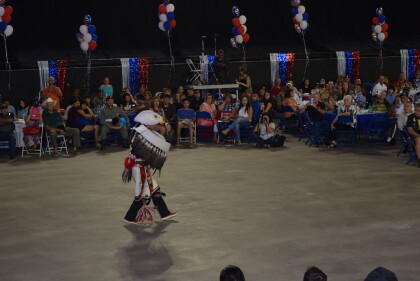
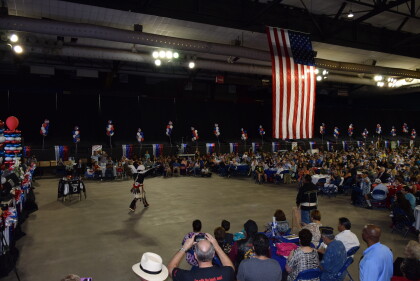
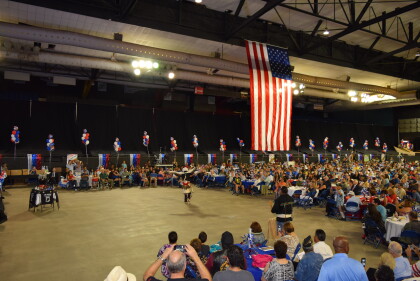

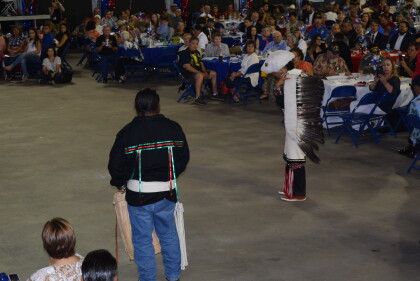
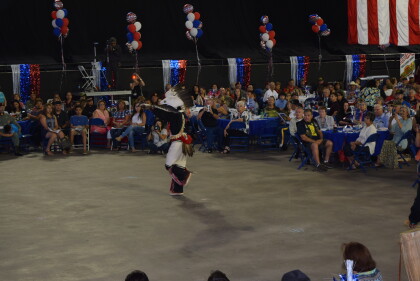




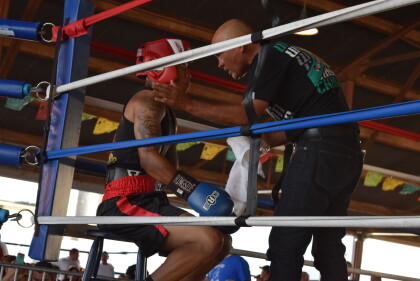

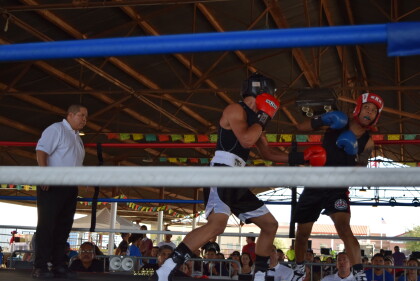
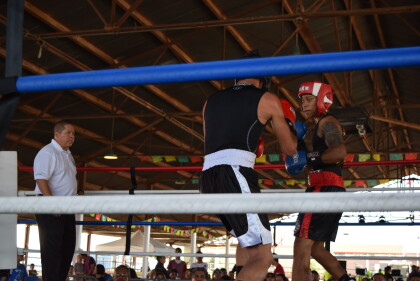
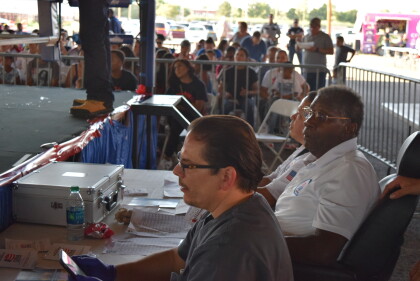





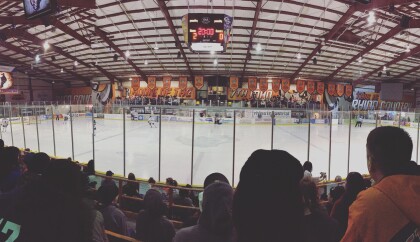

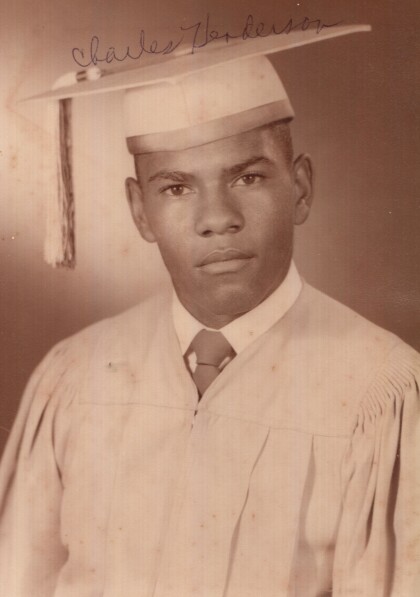
Comments
Add a comment